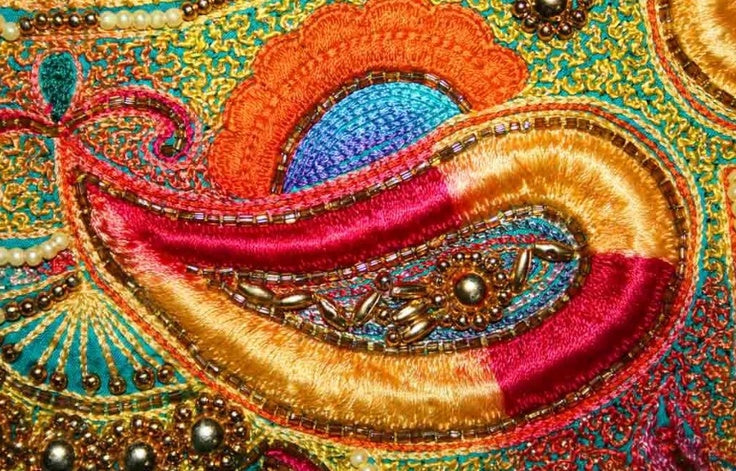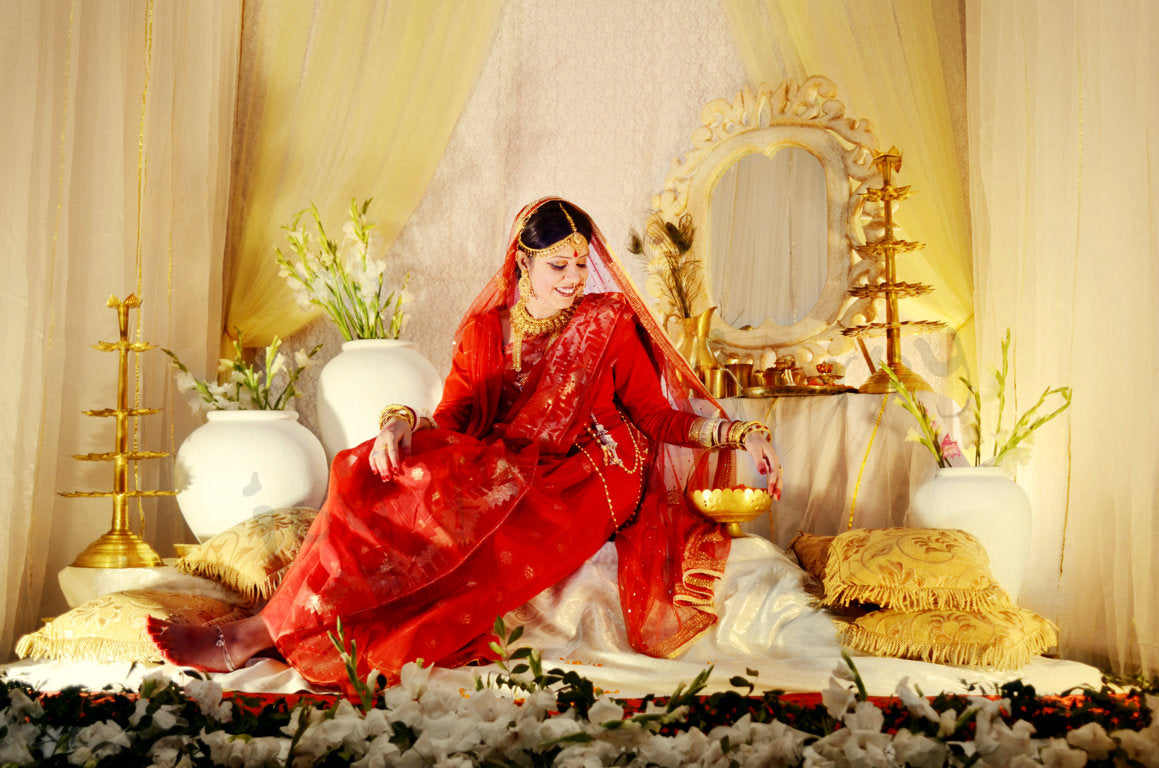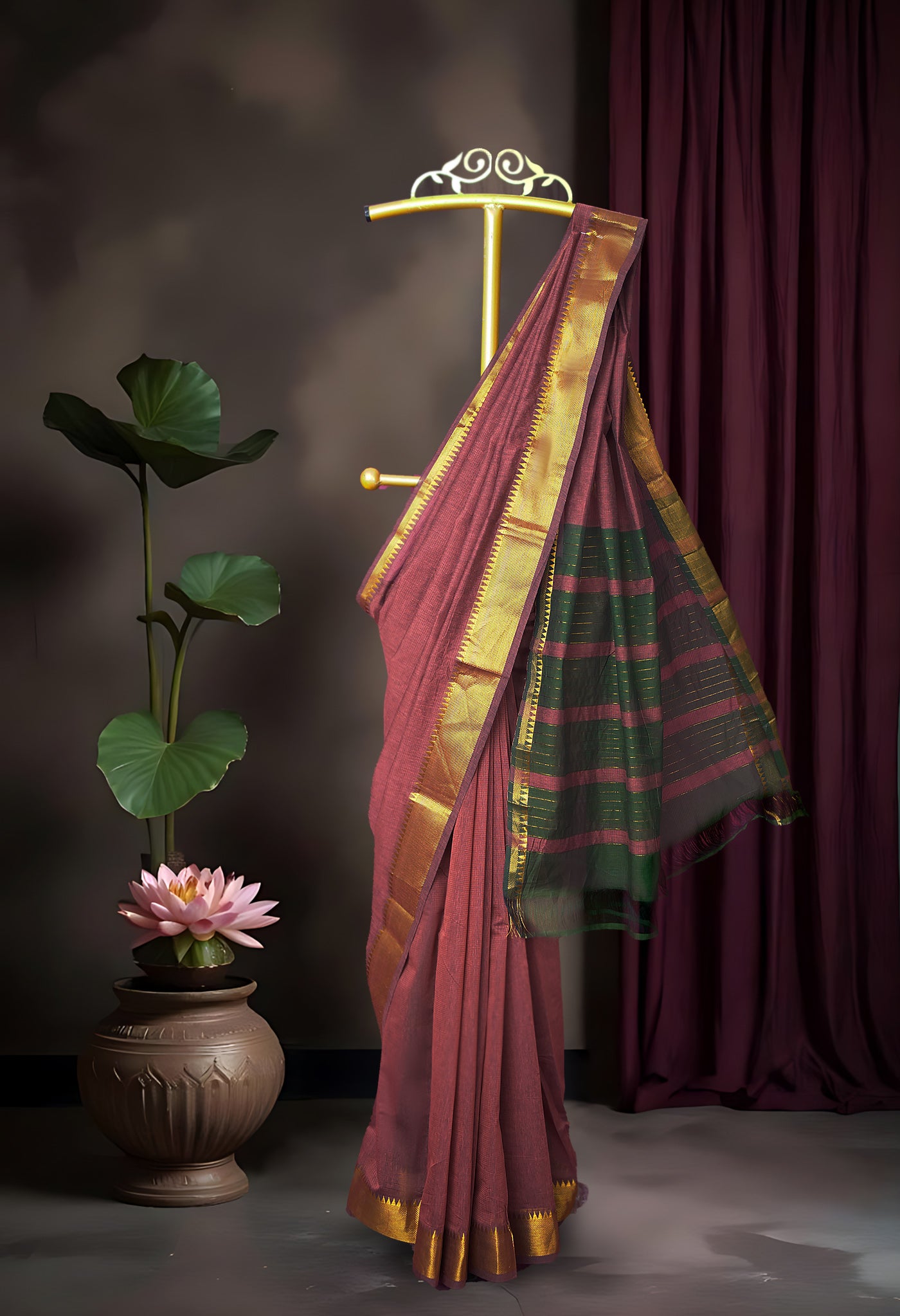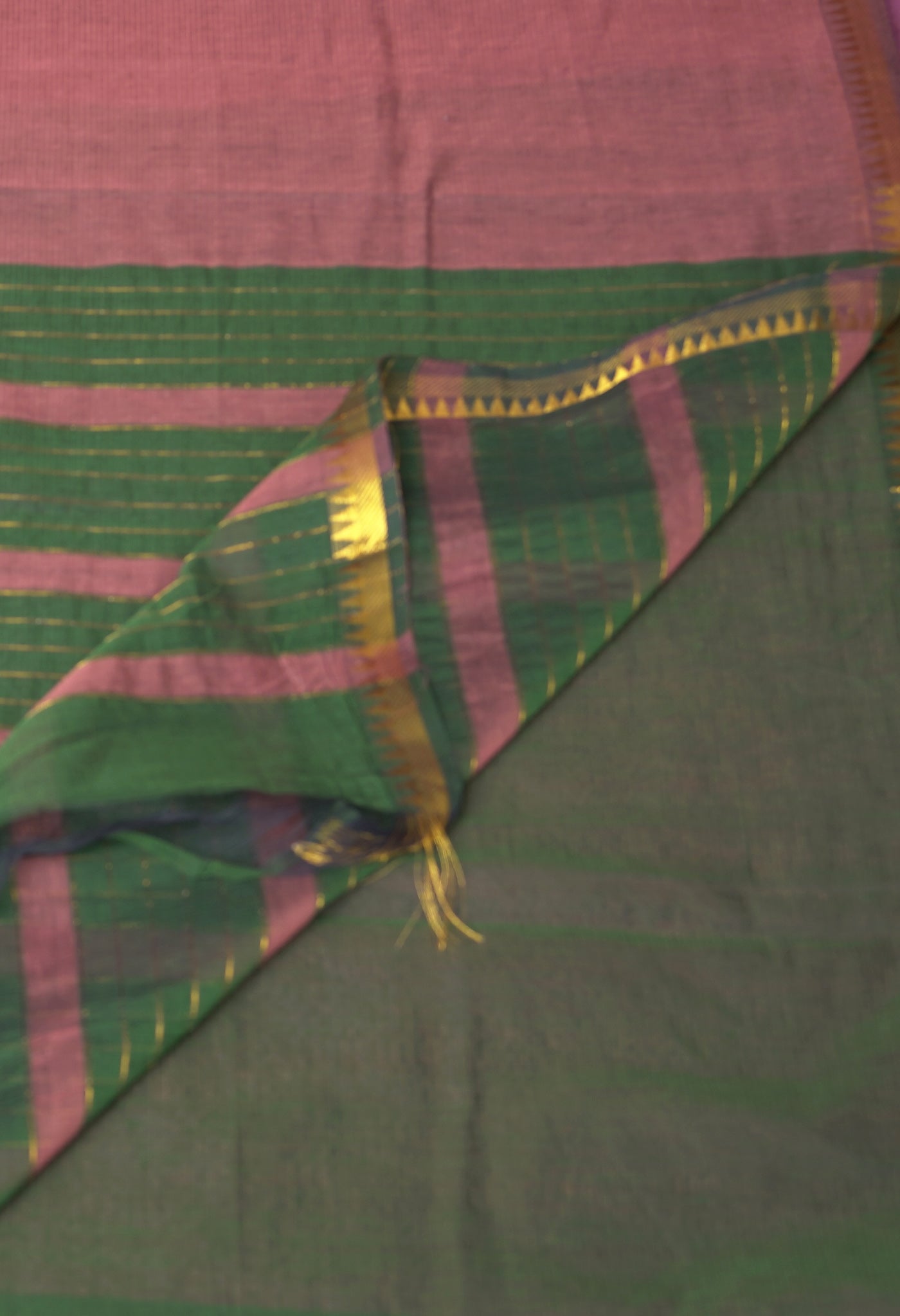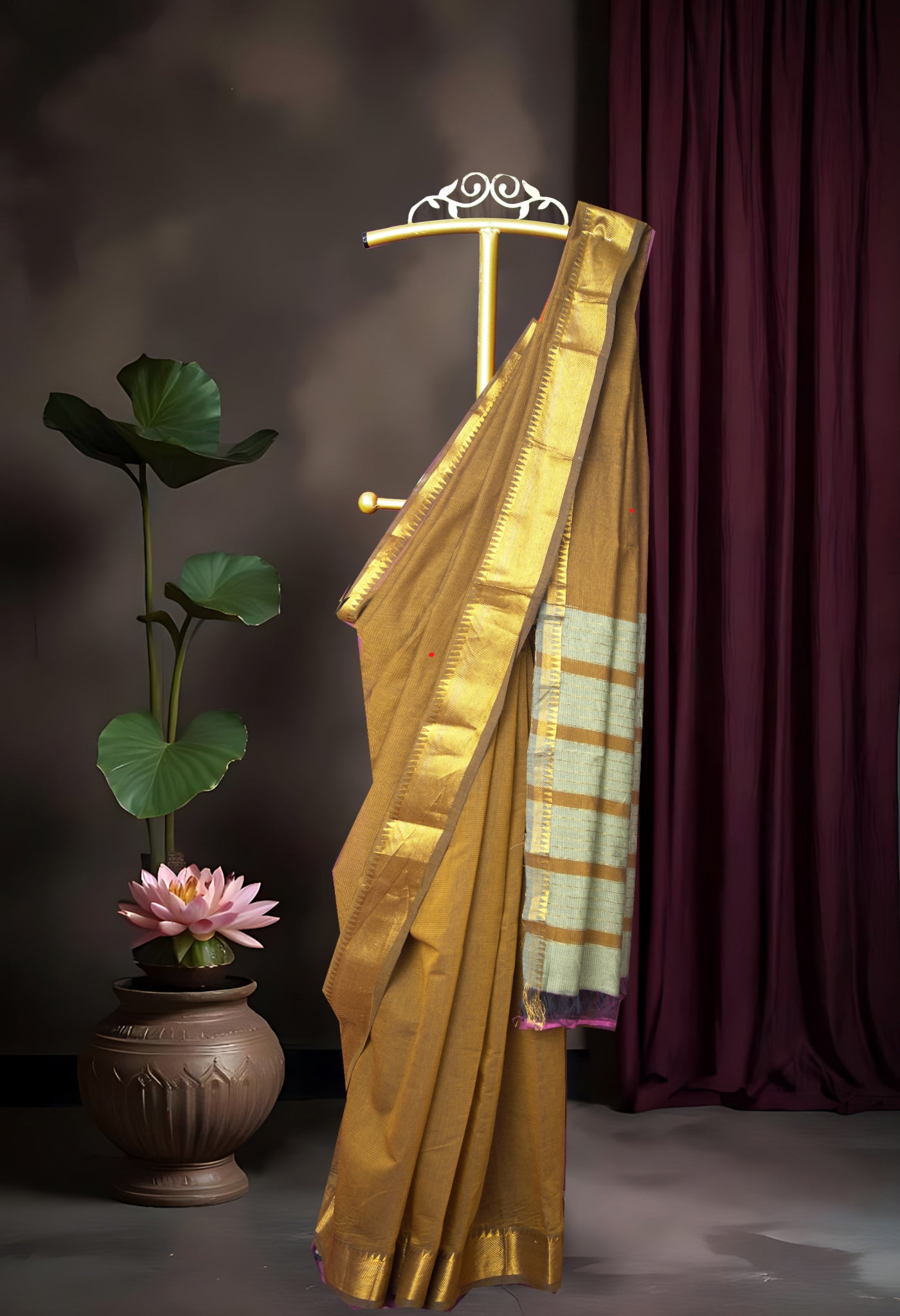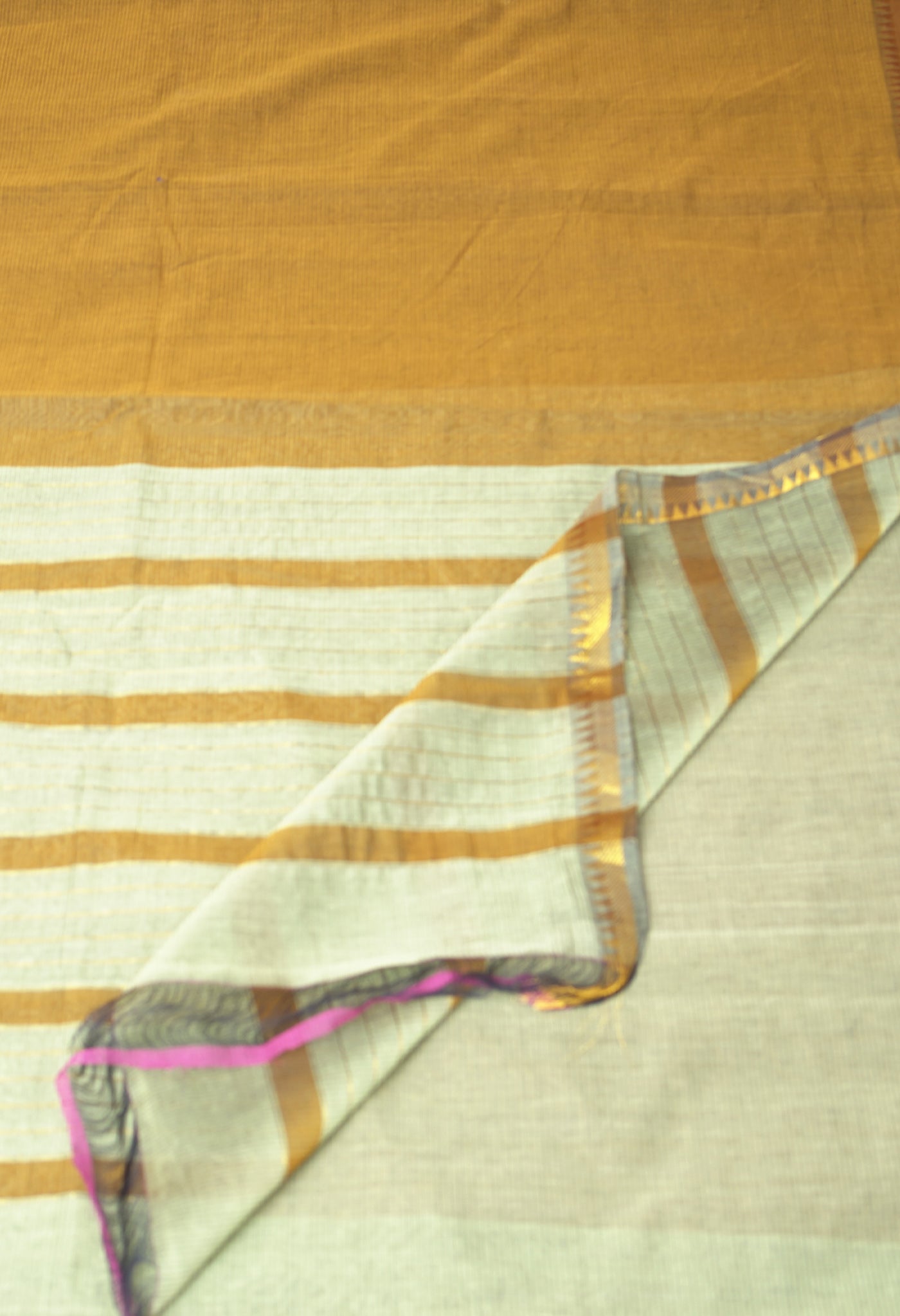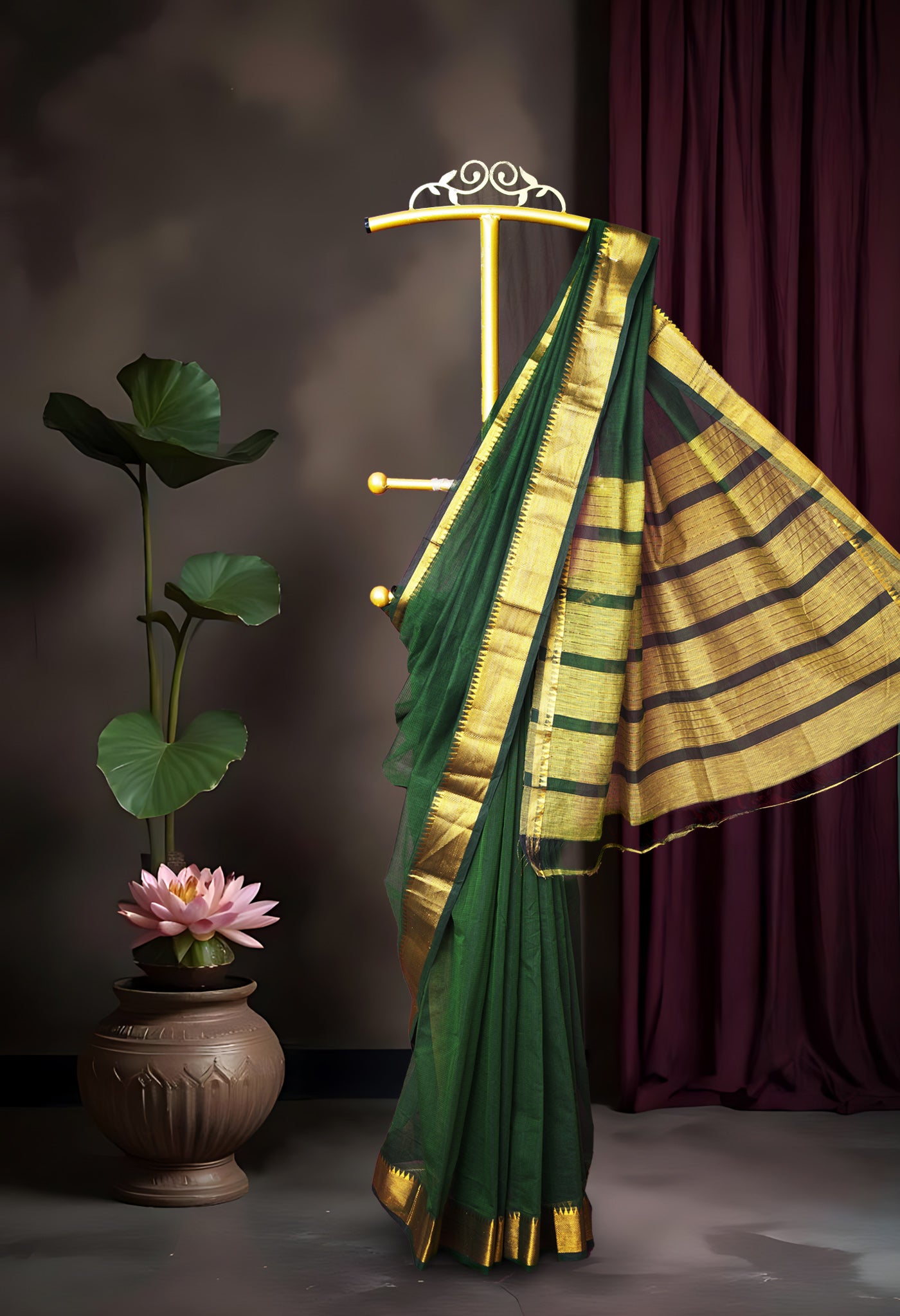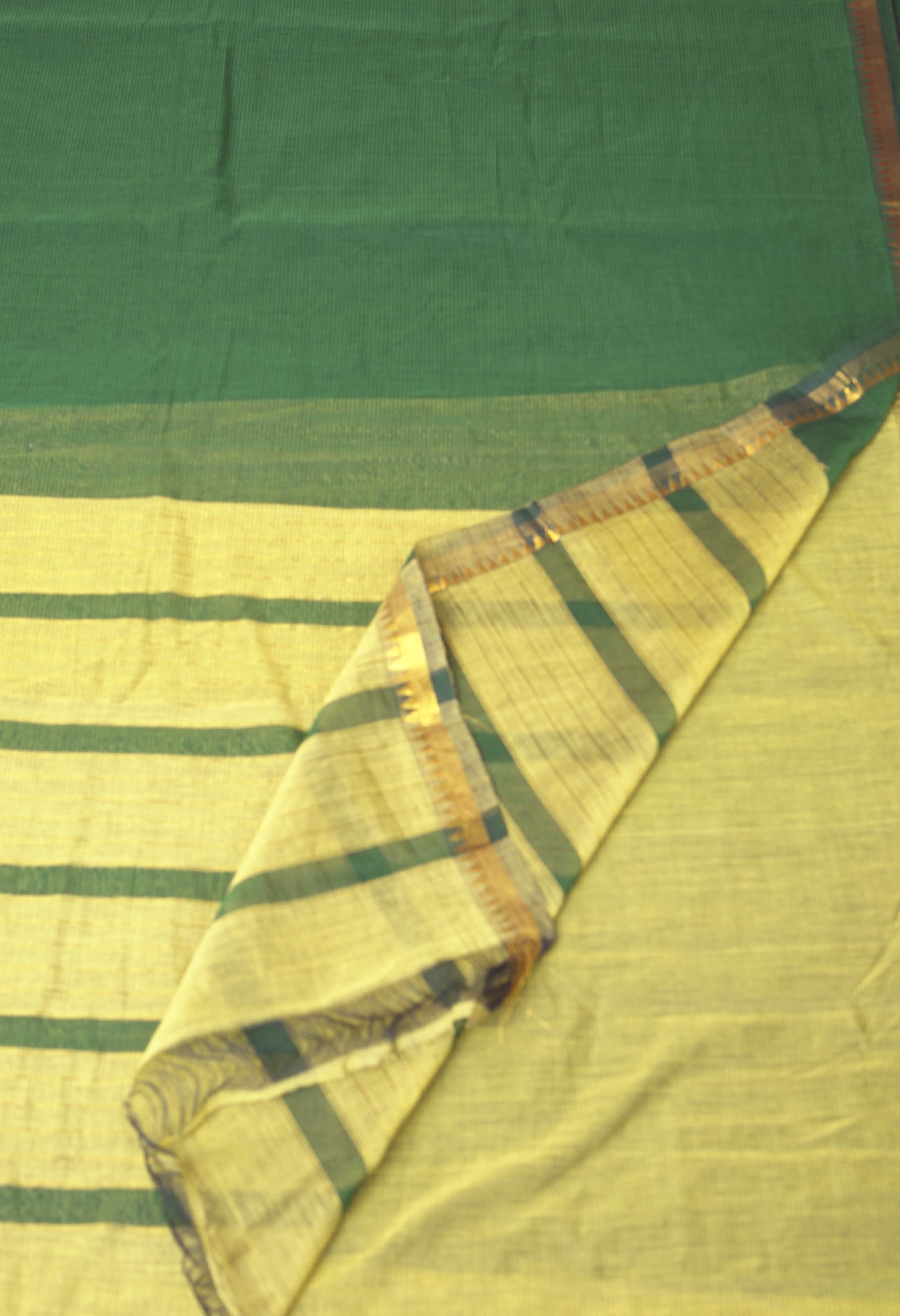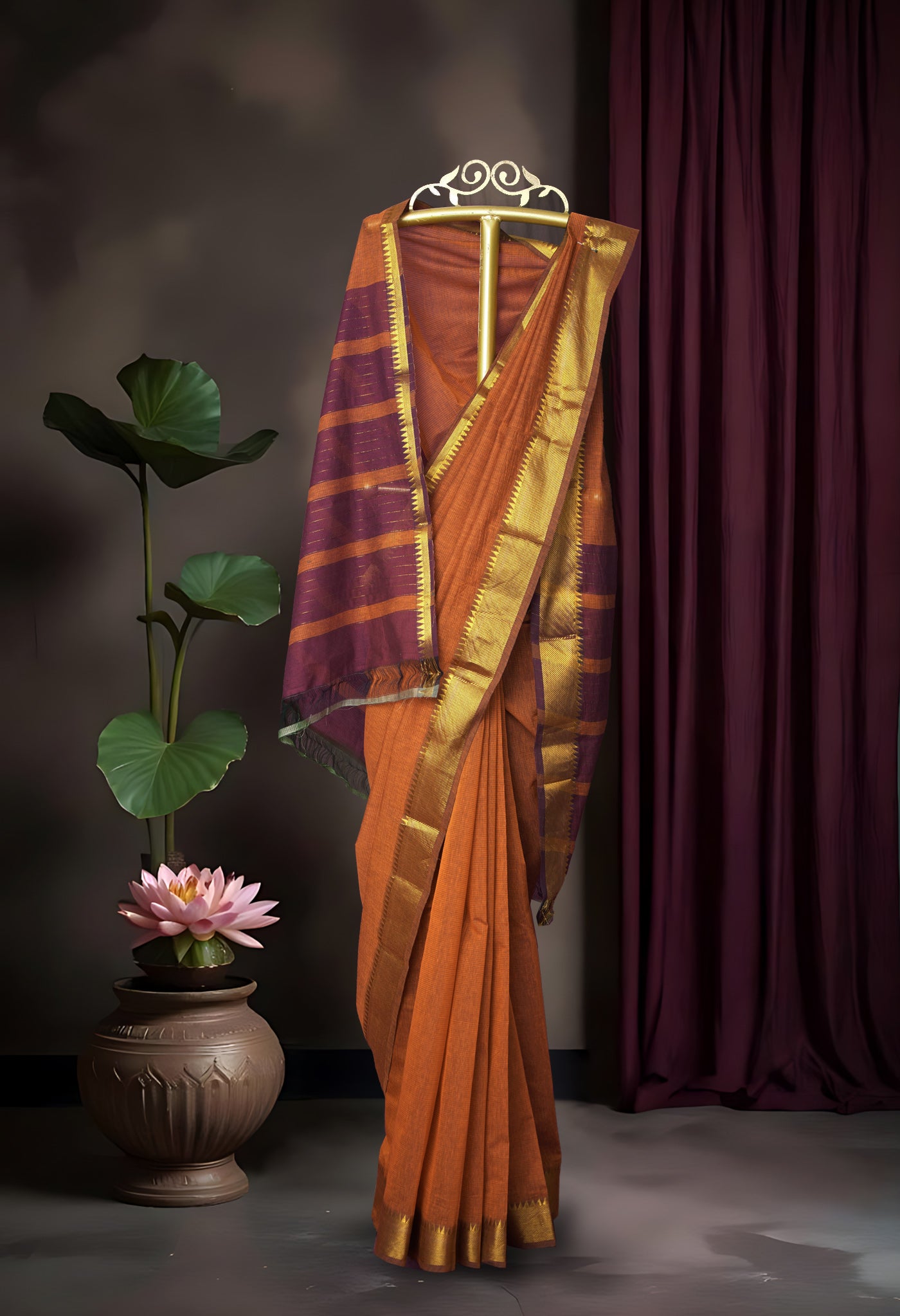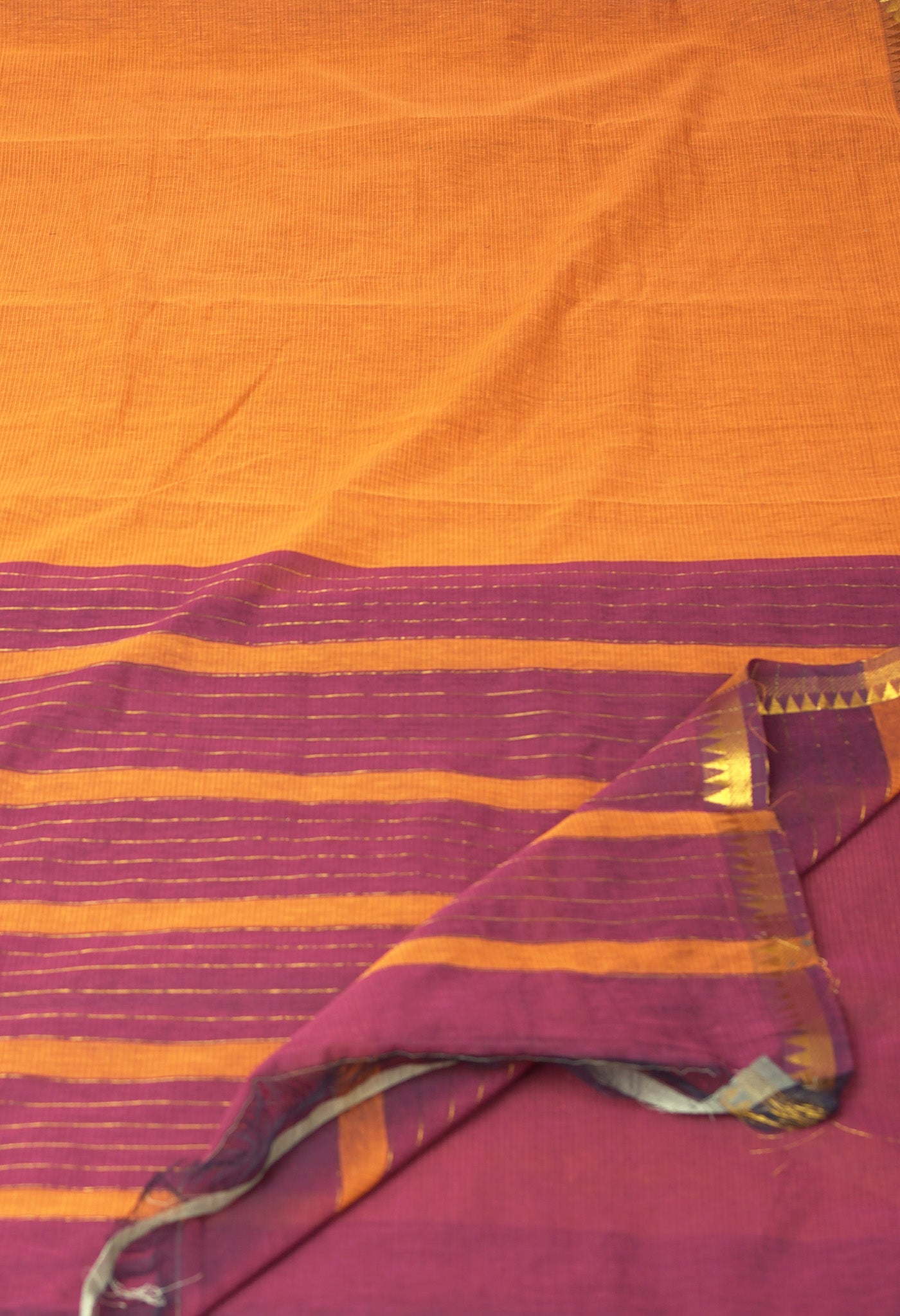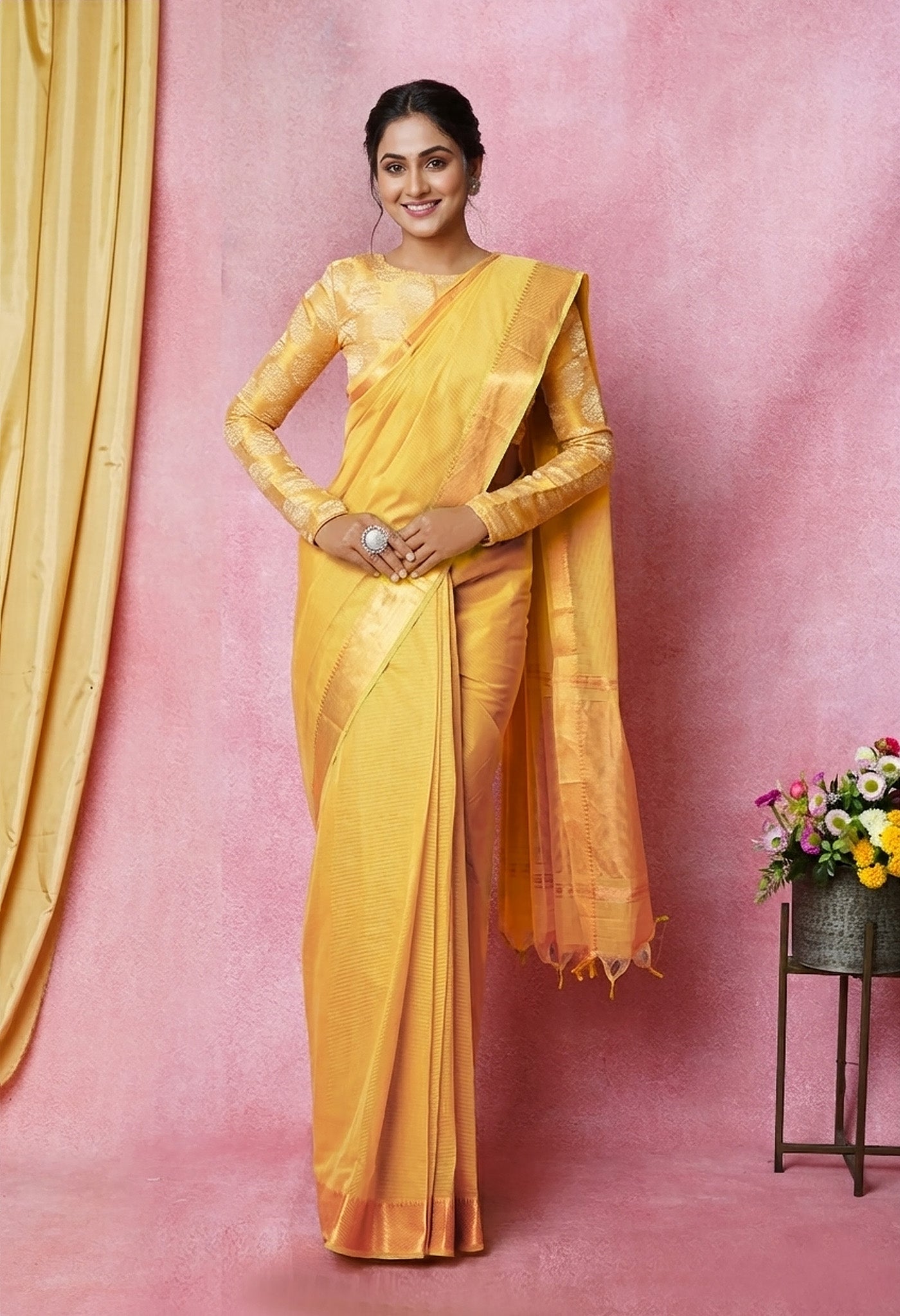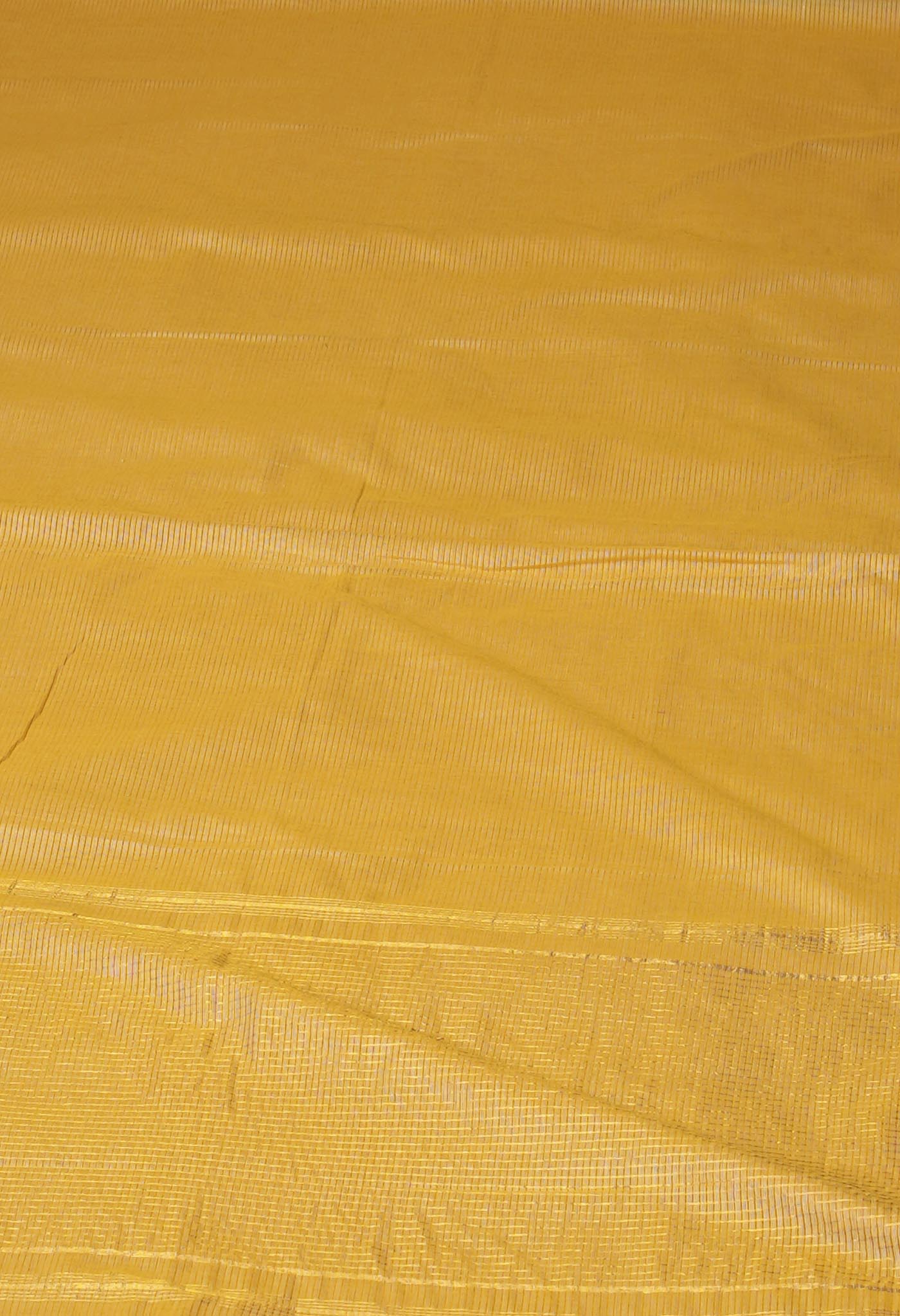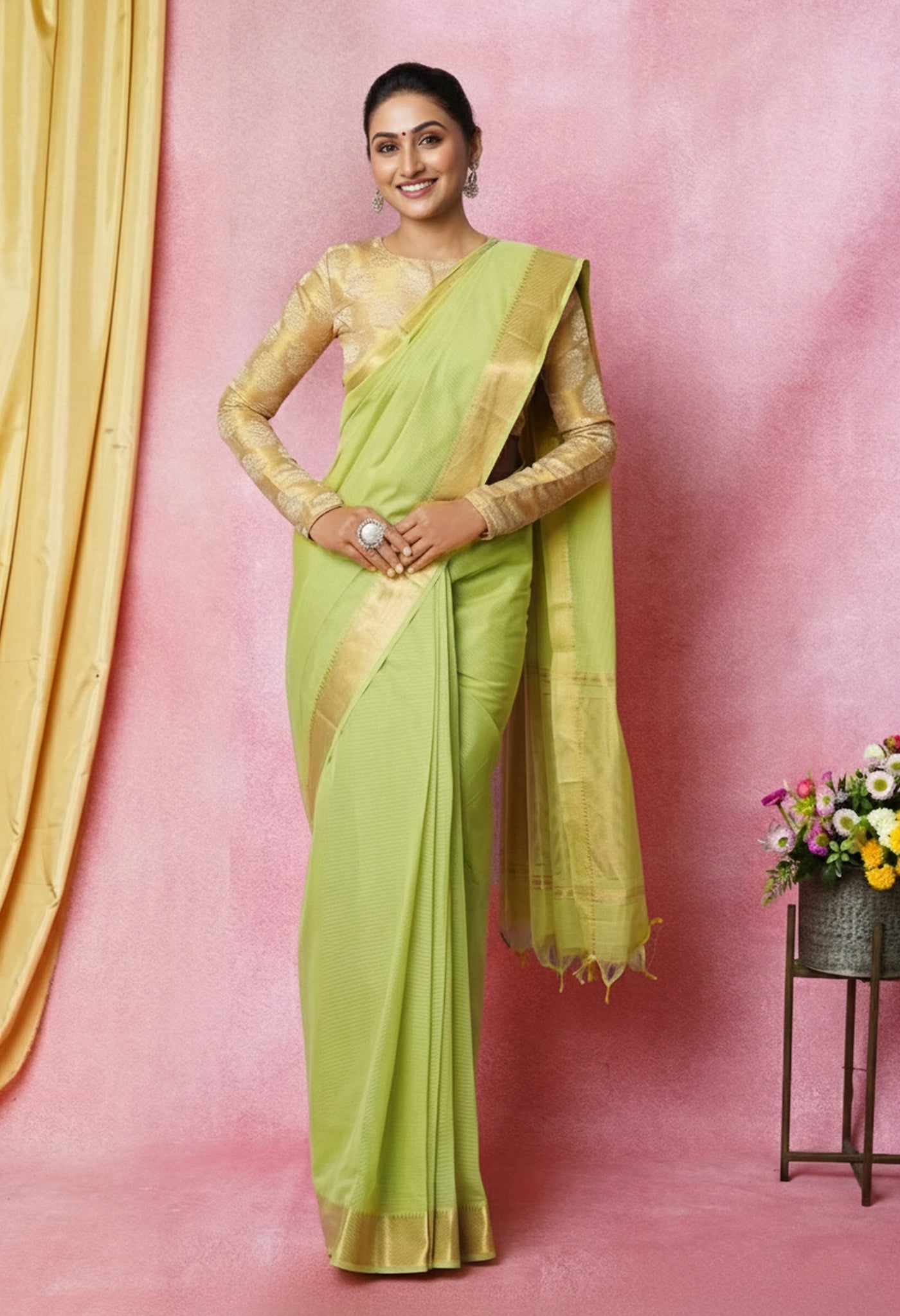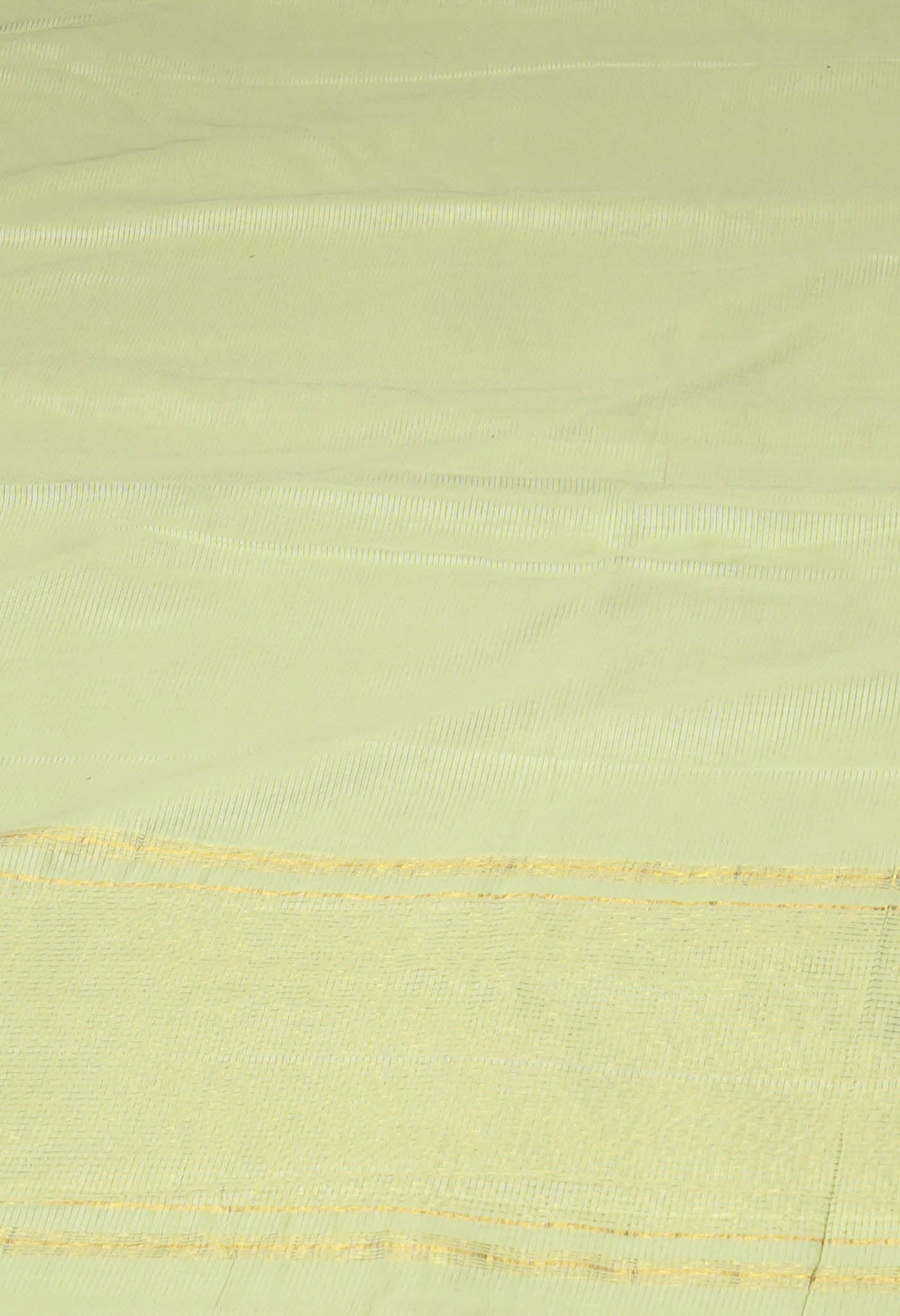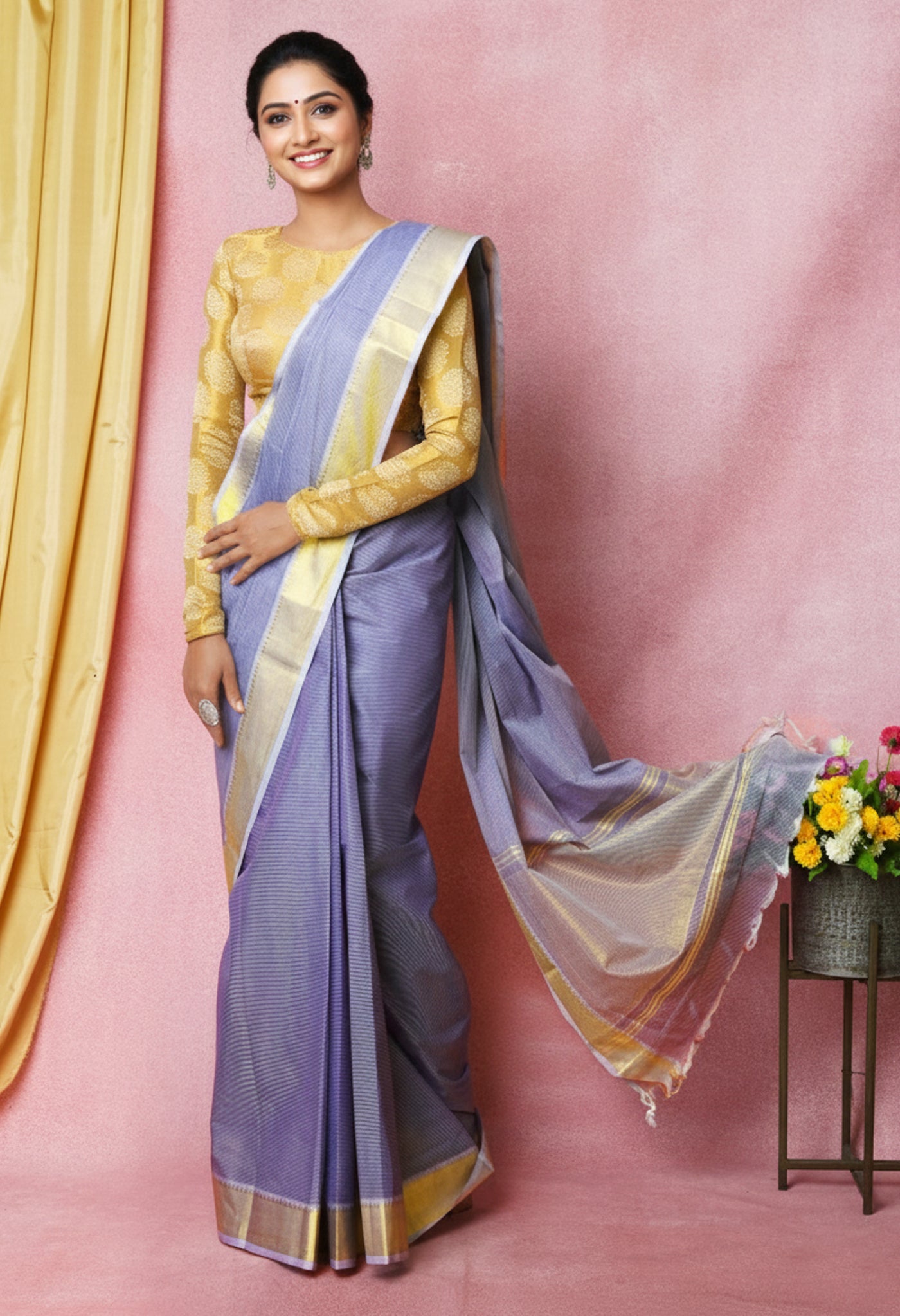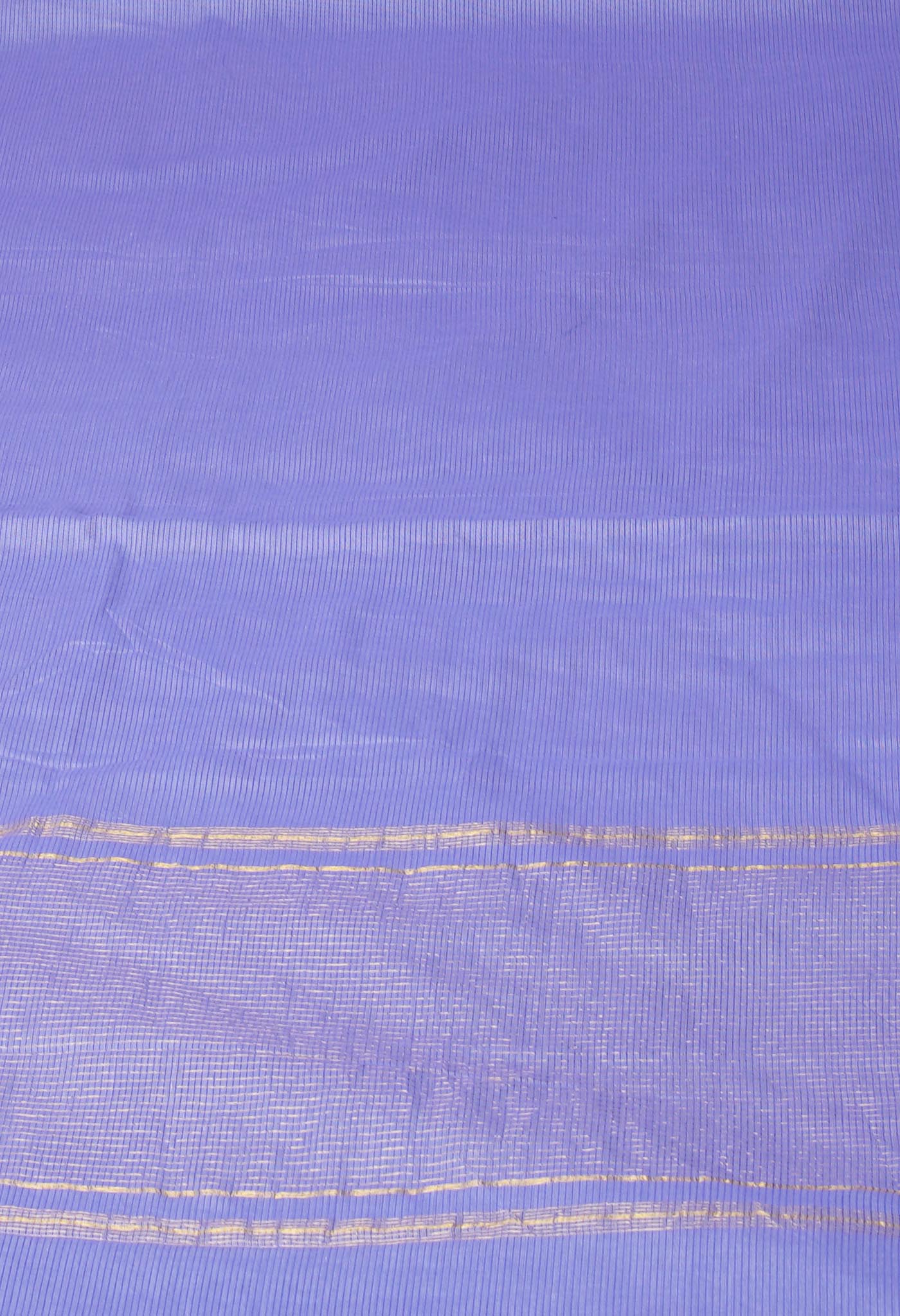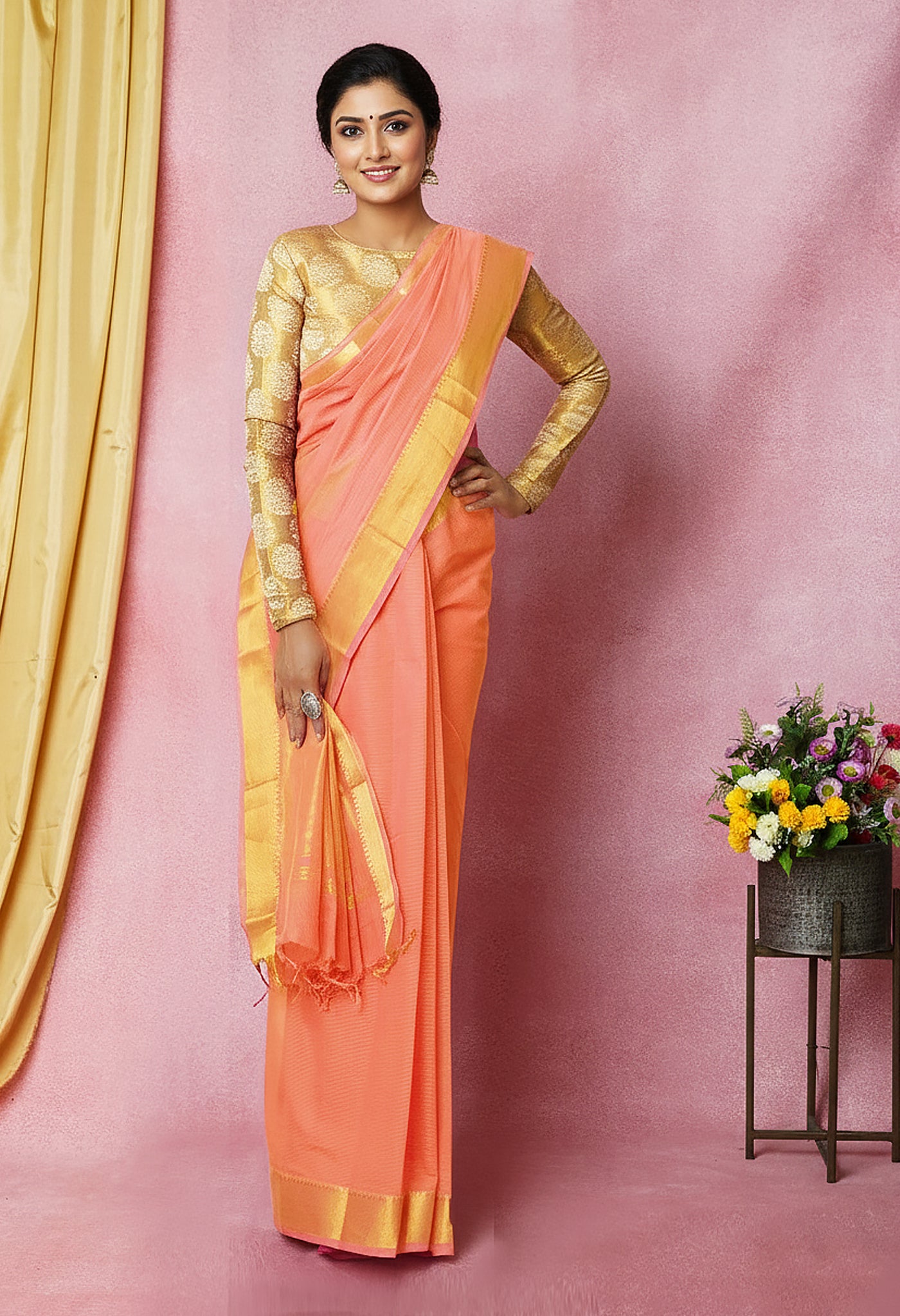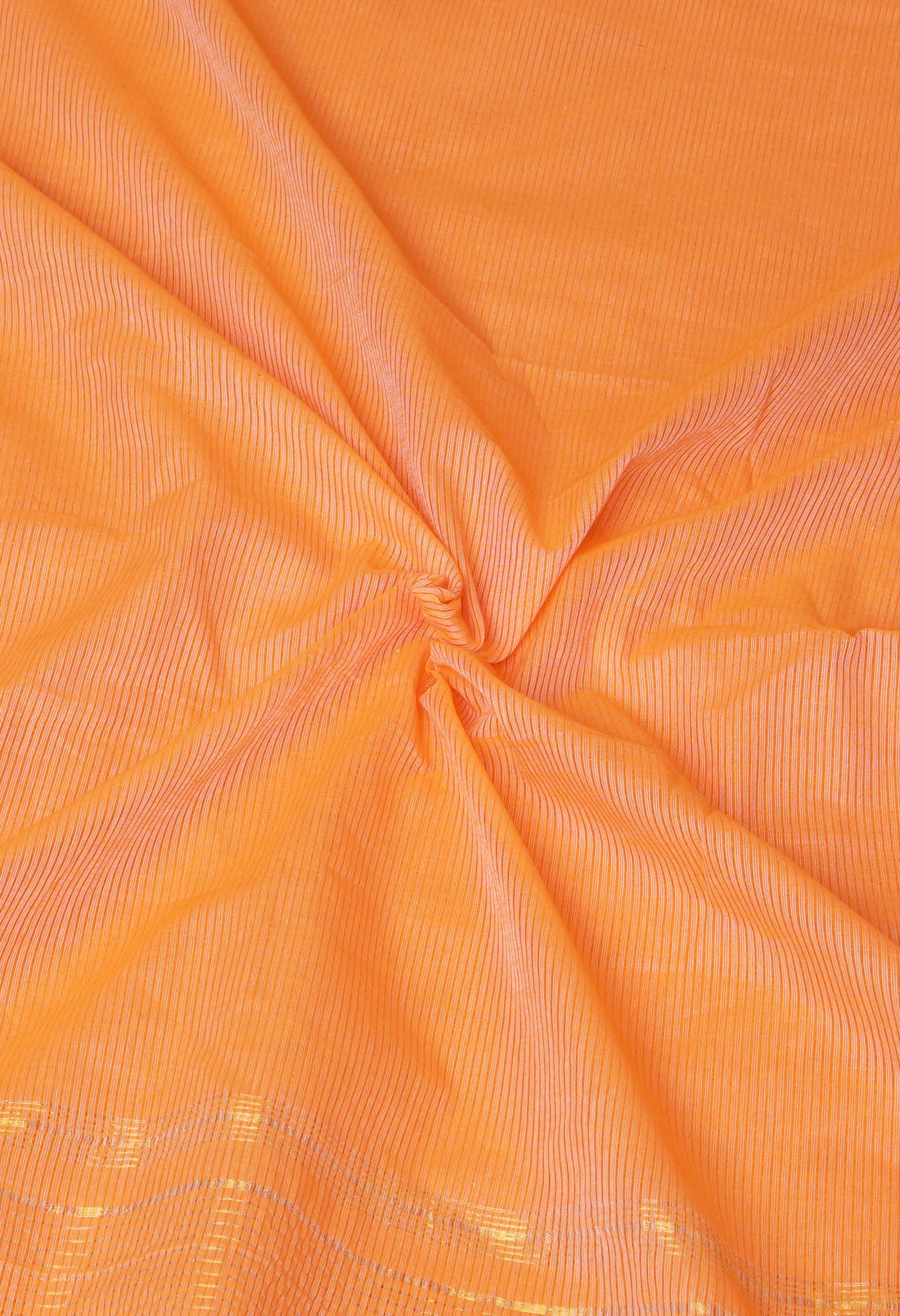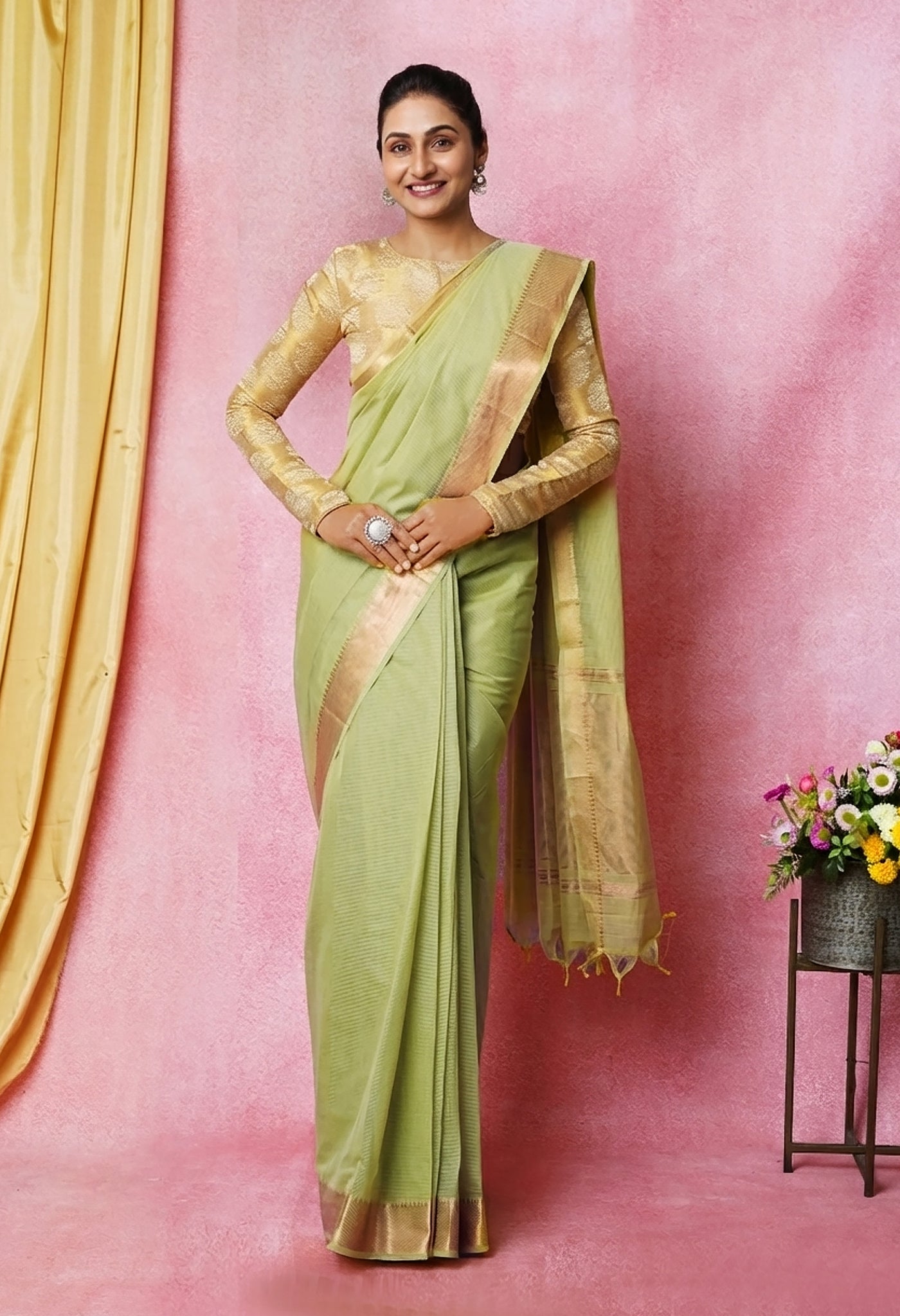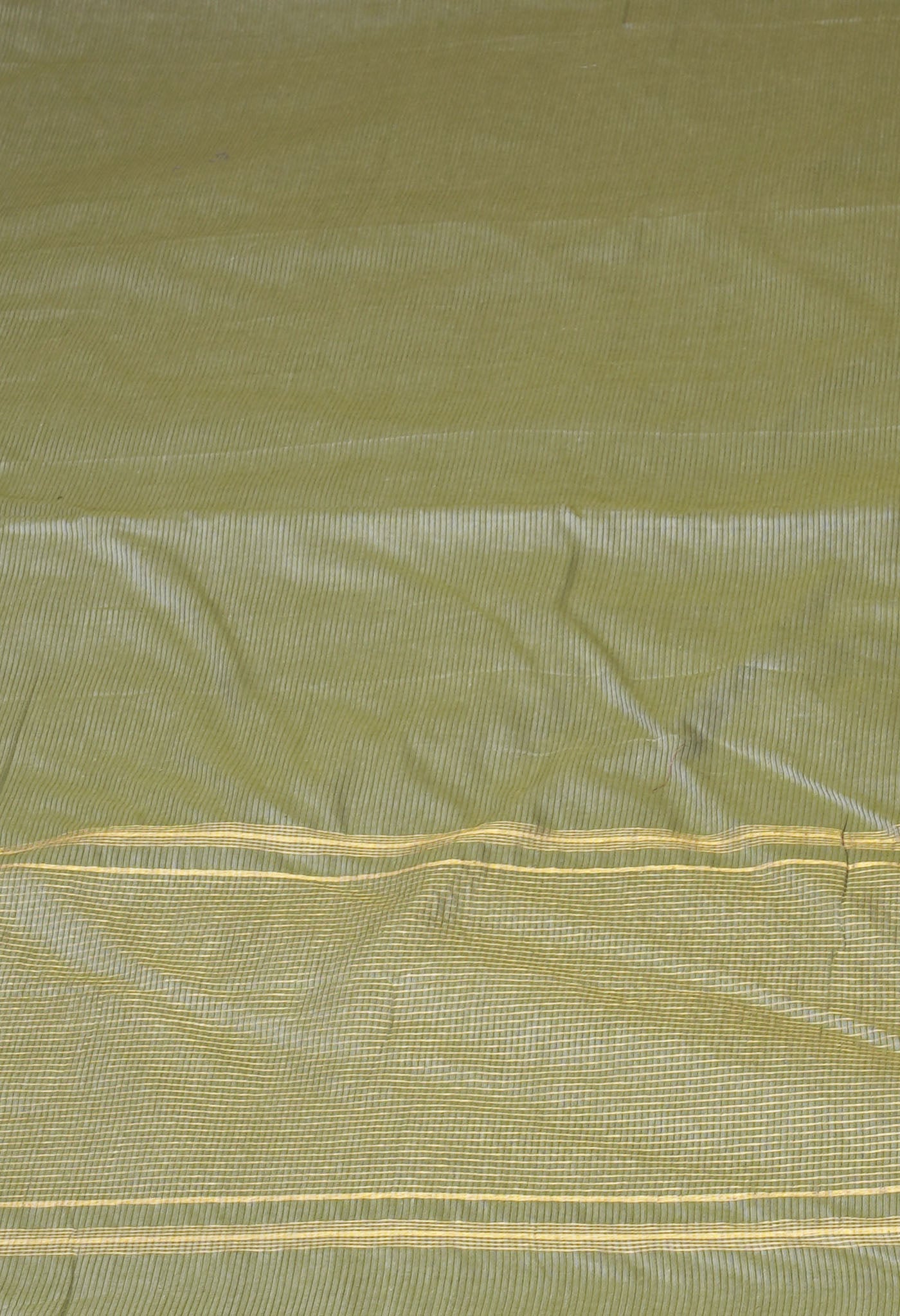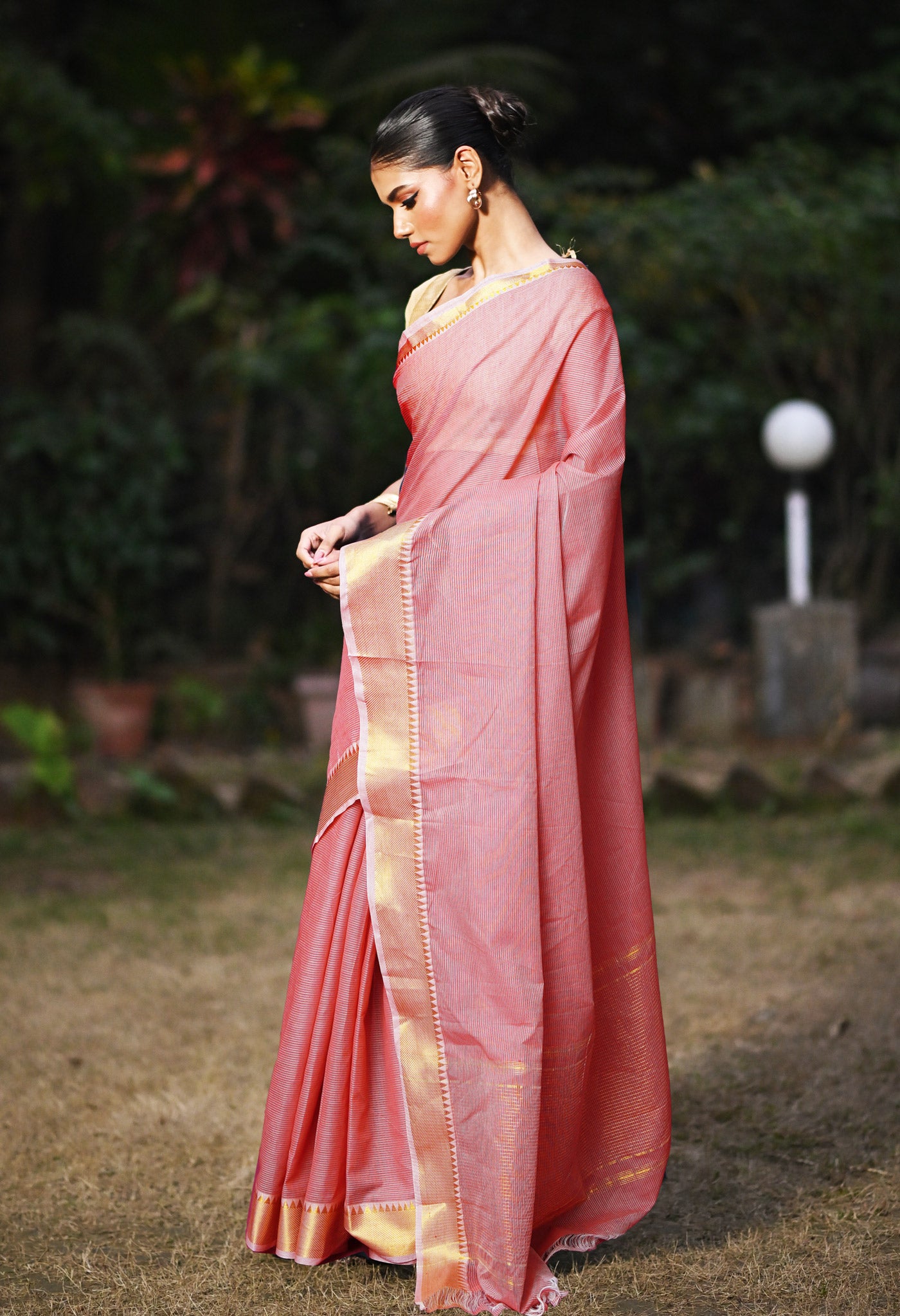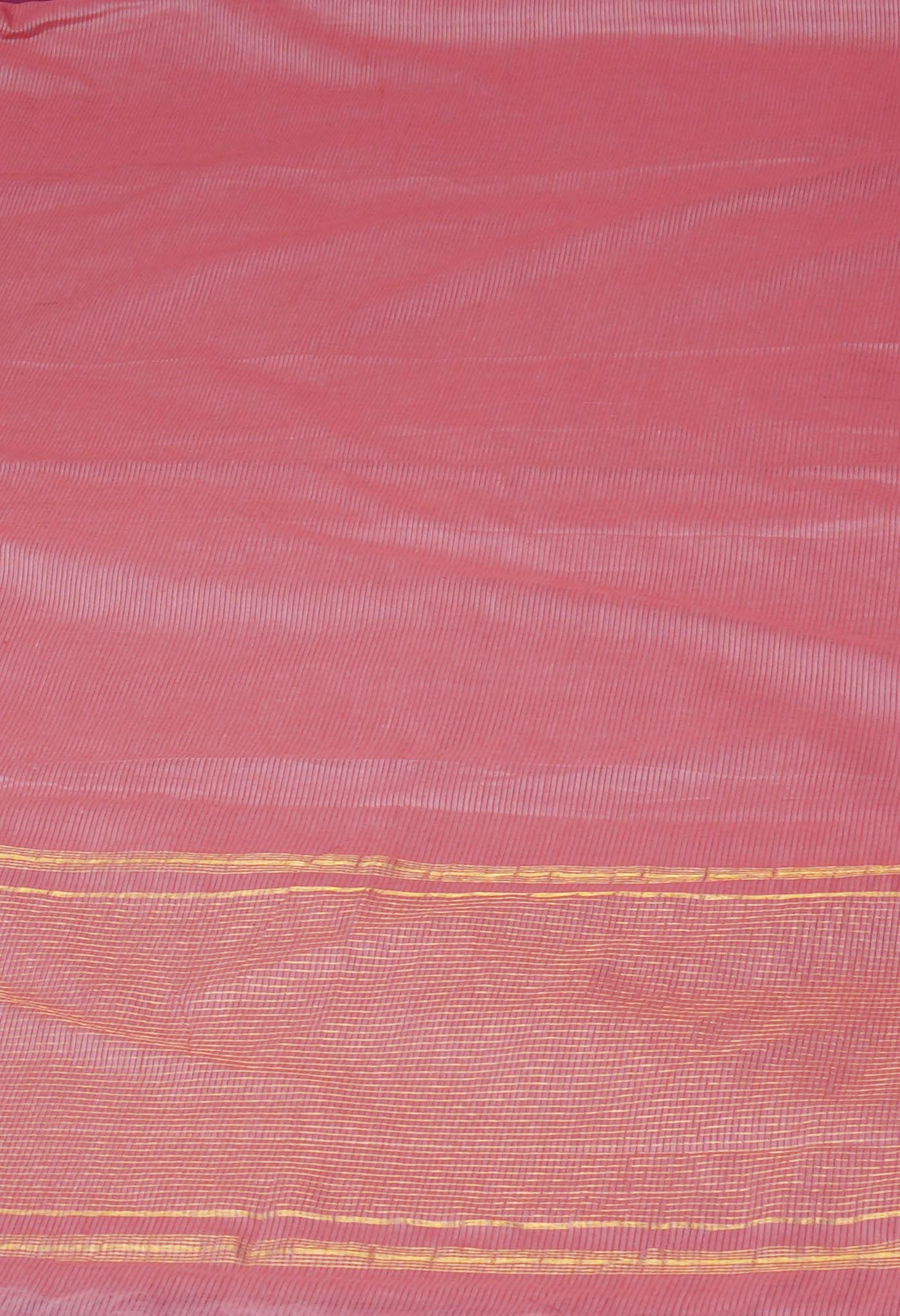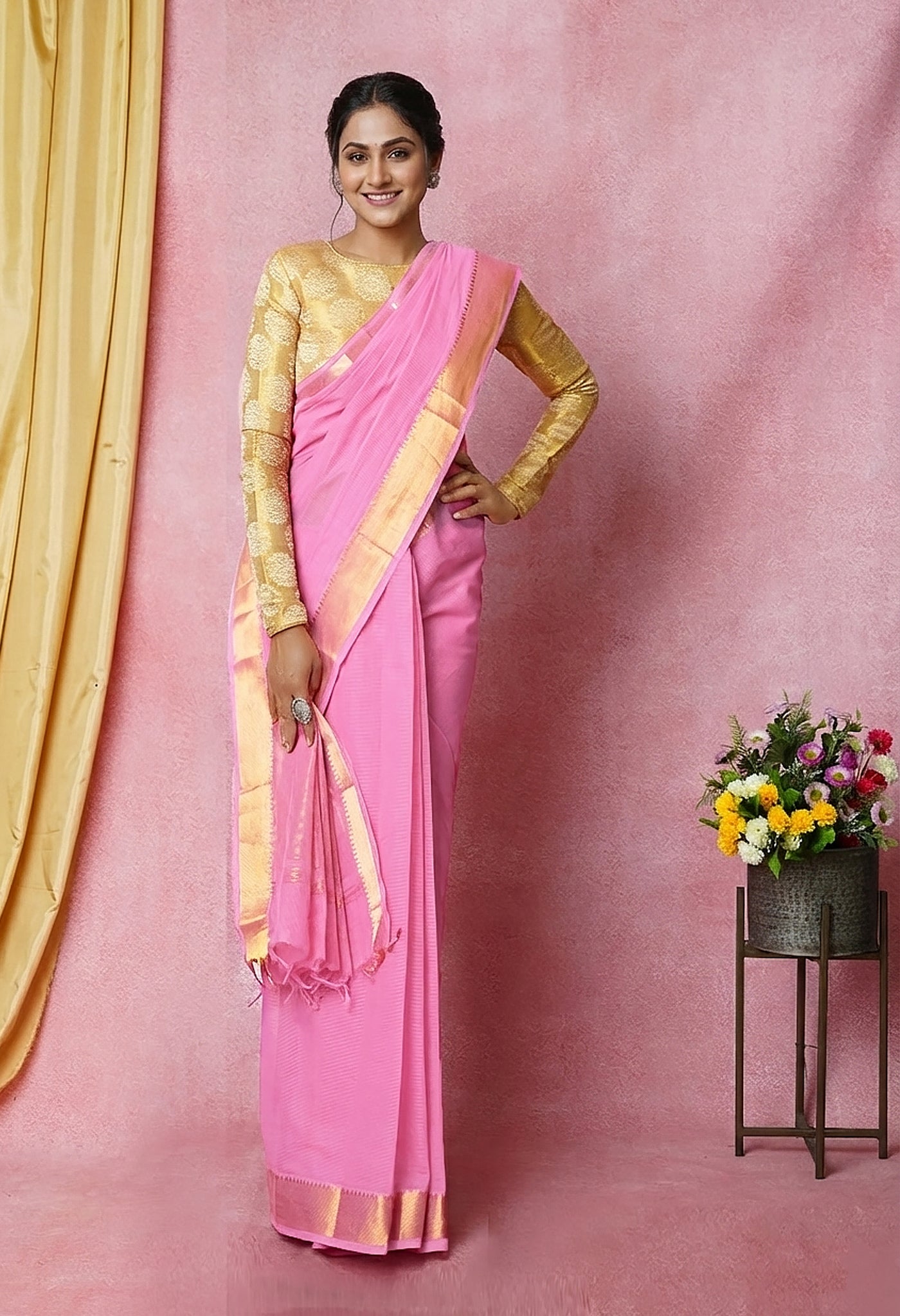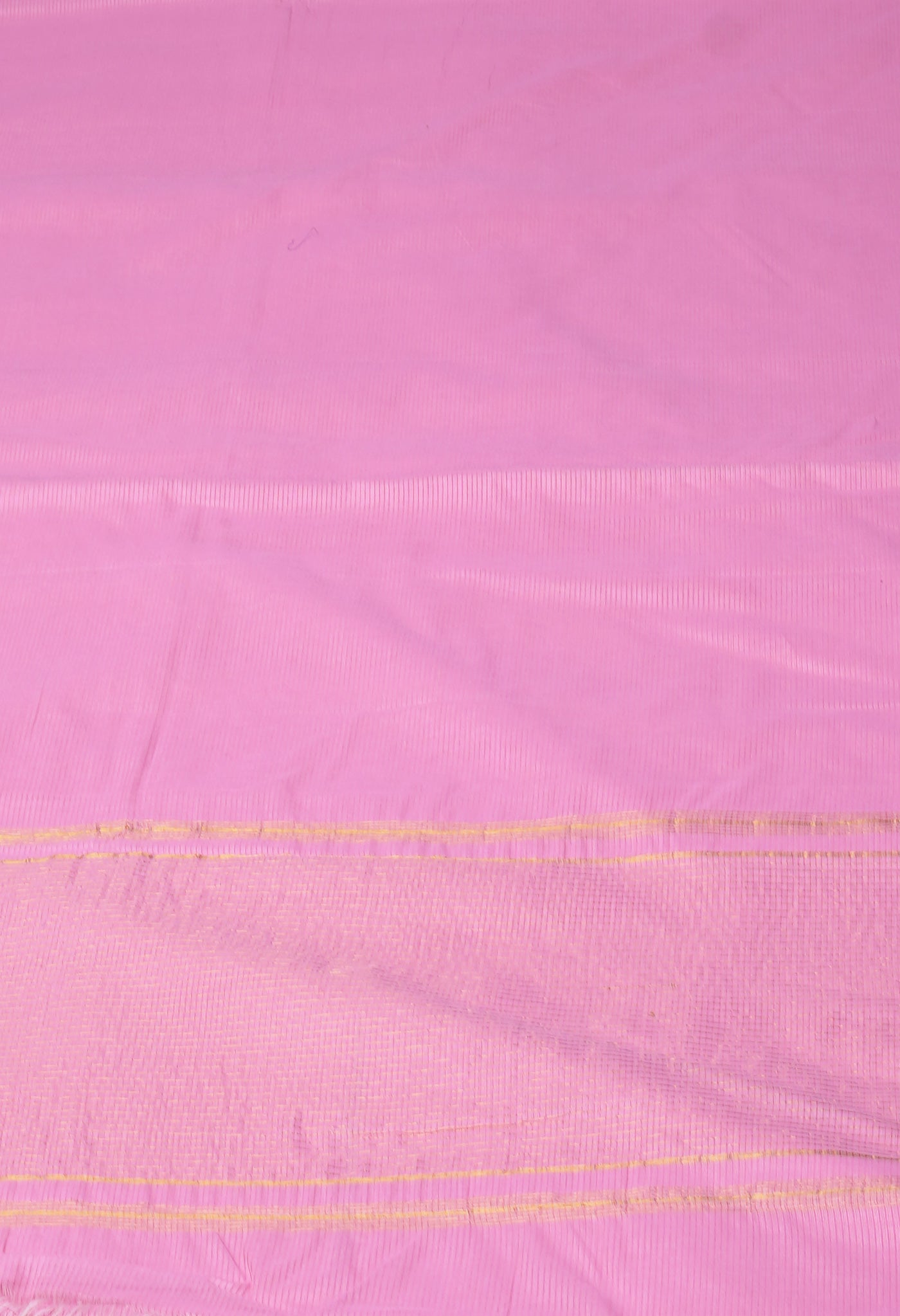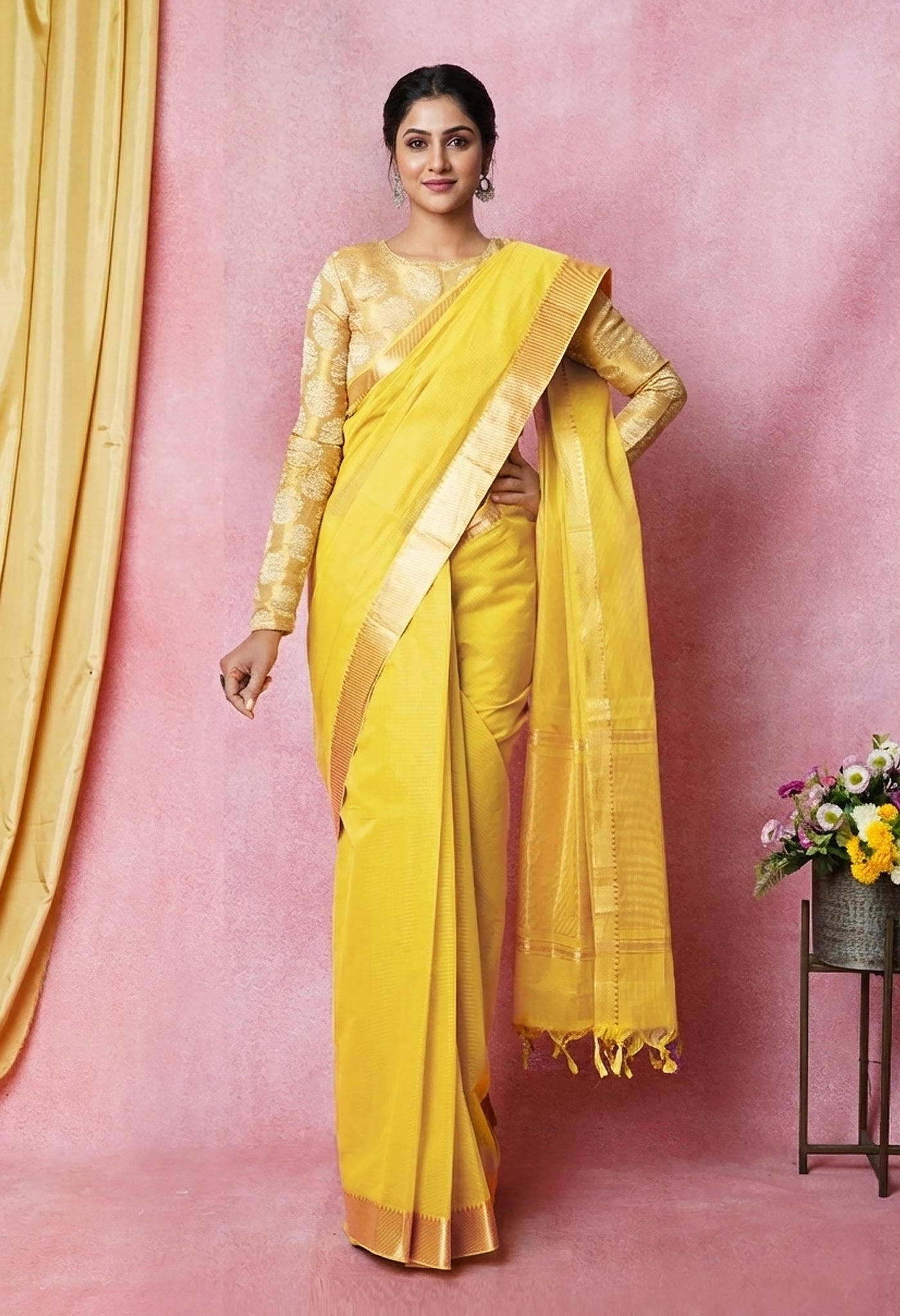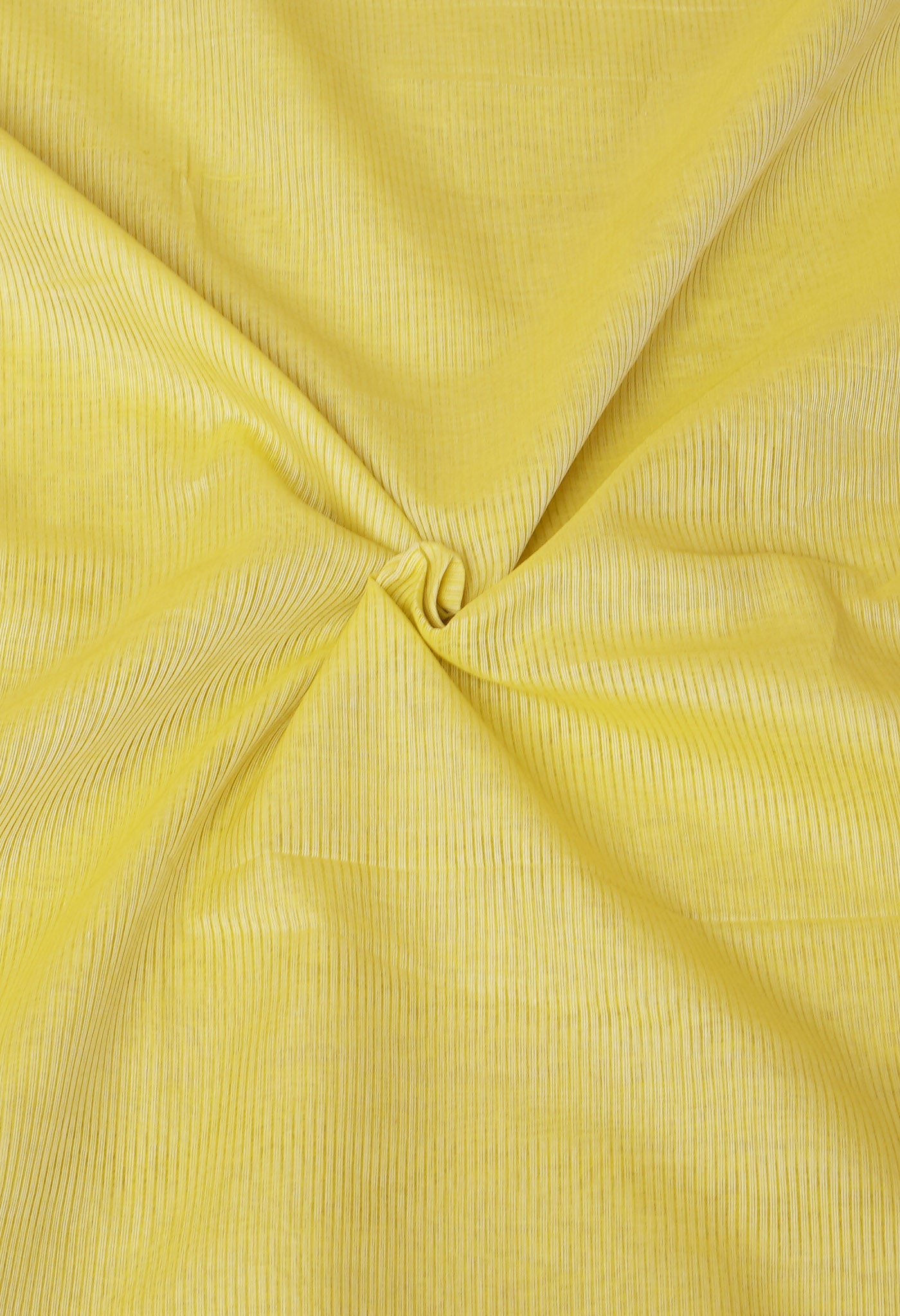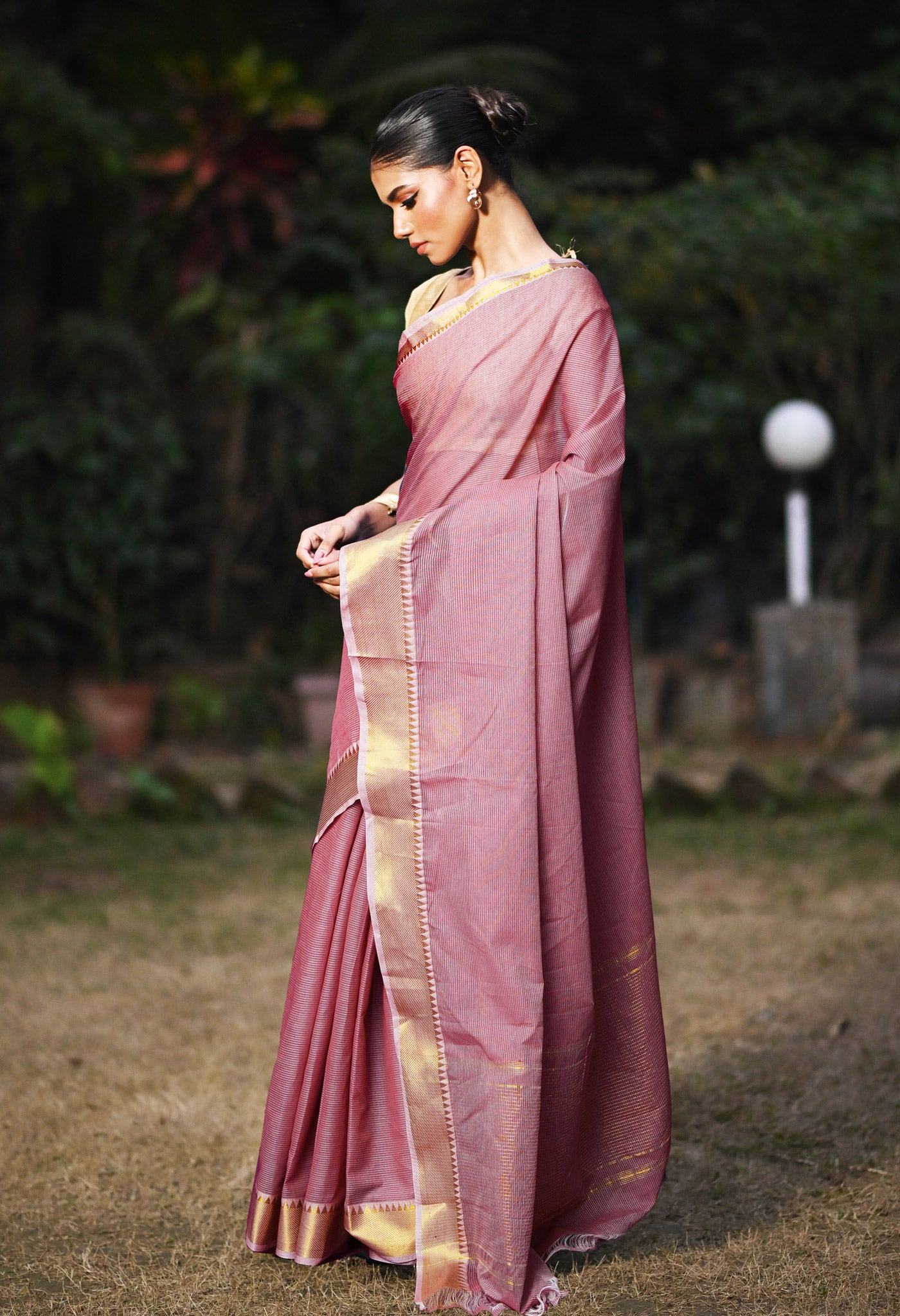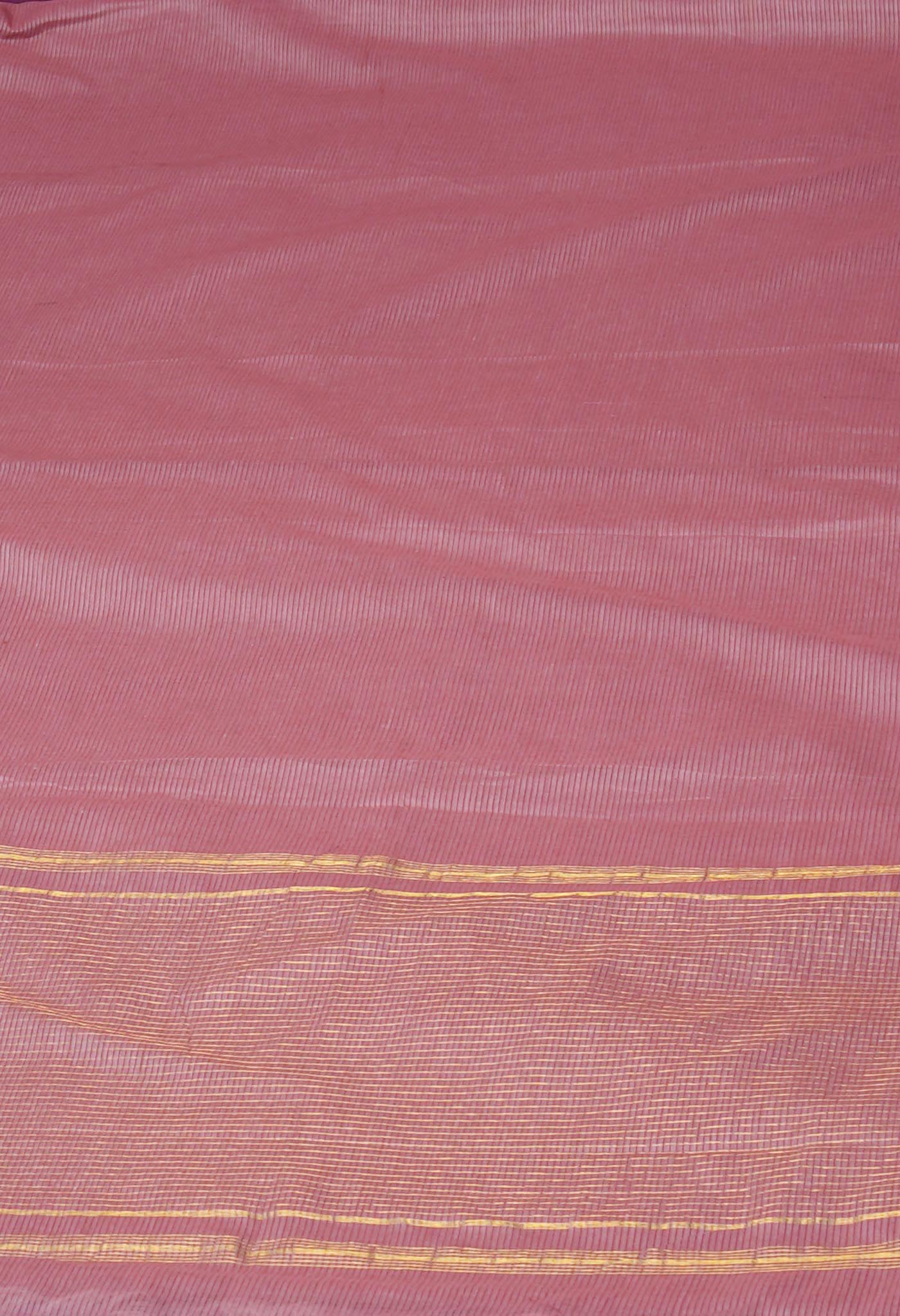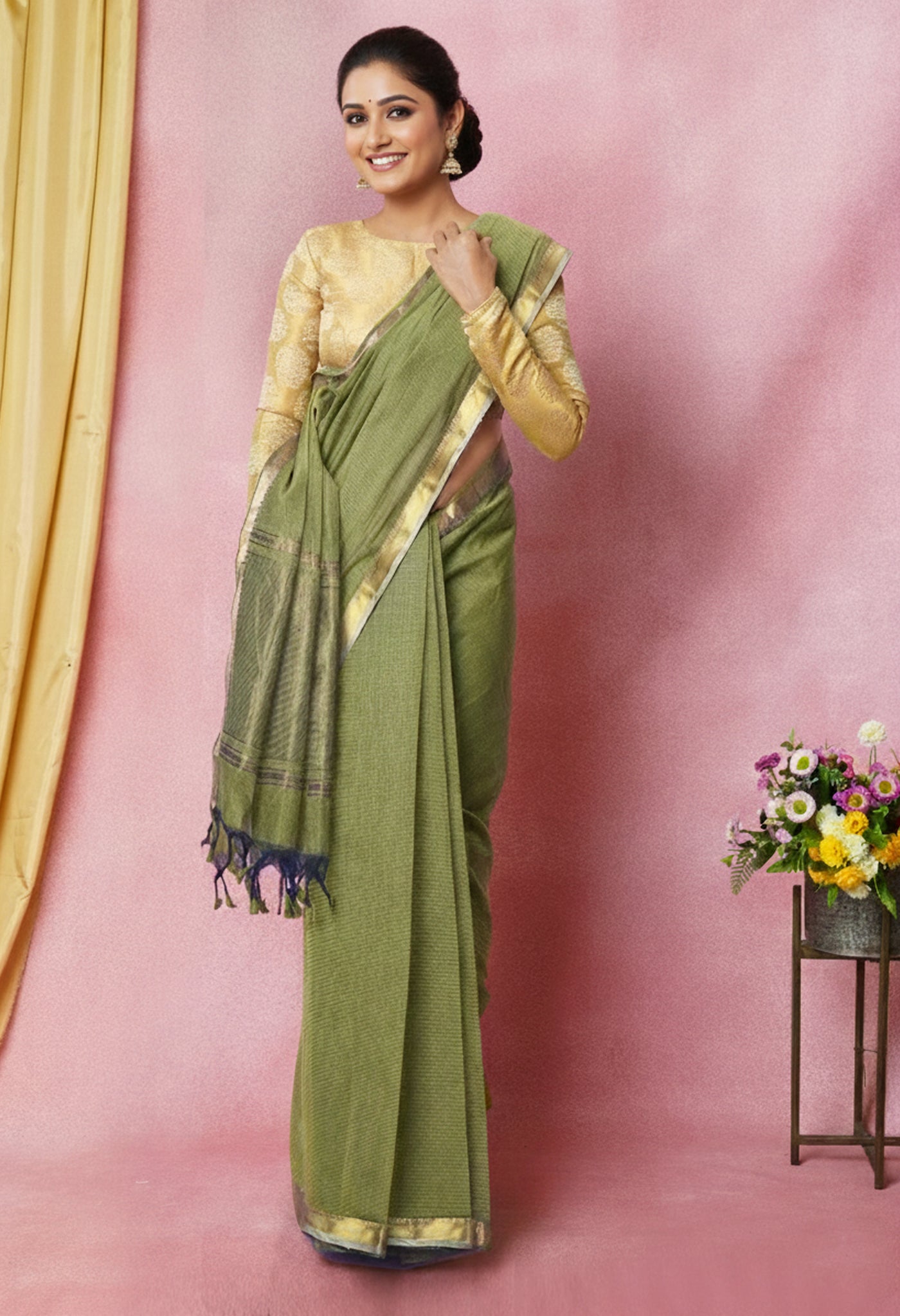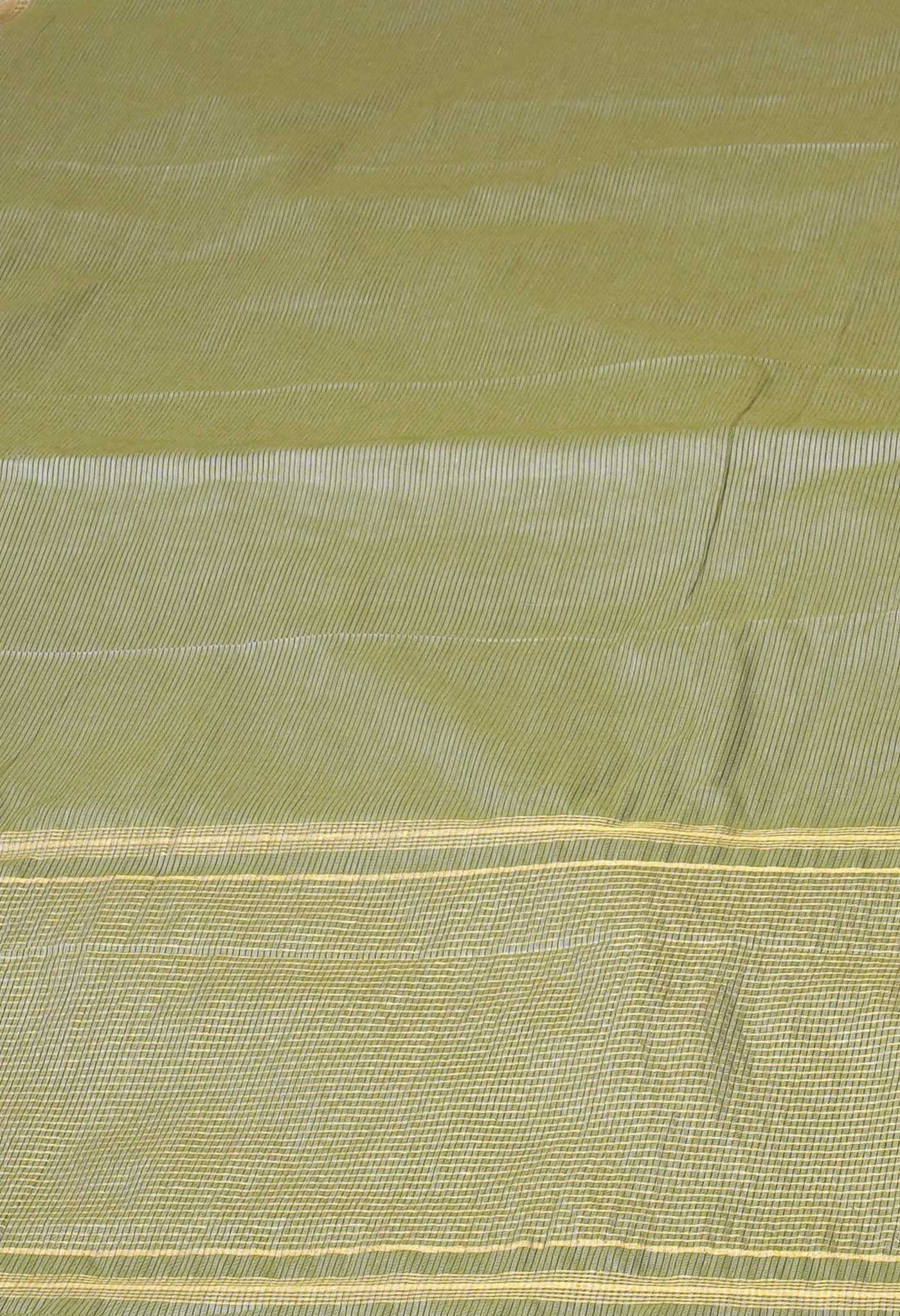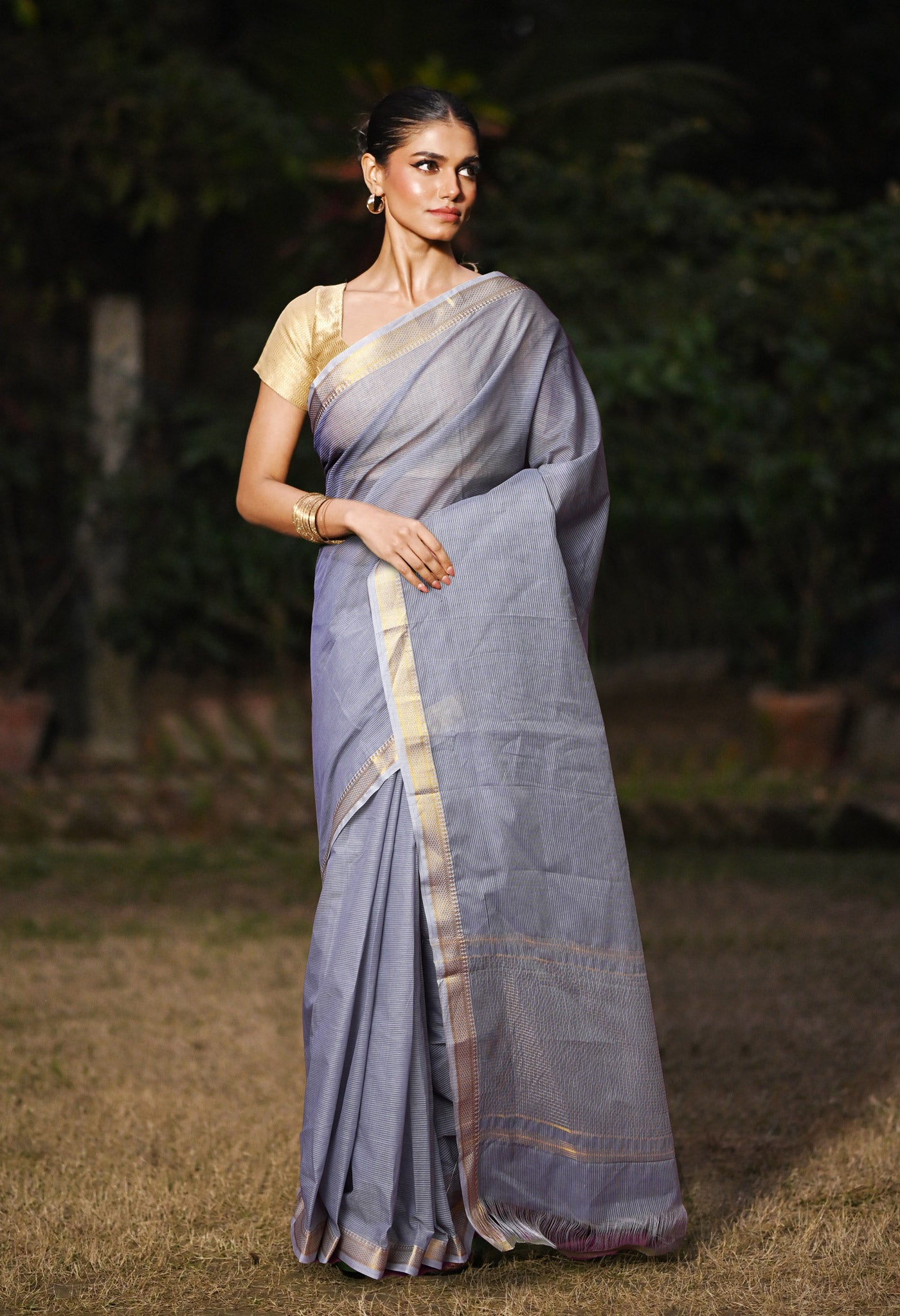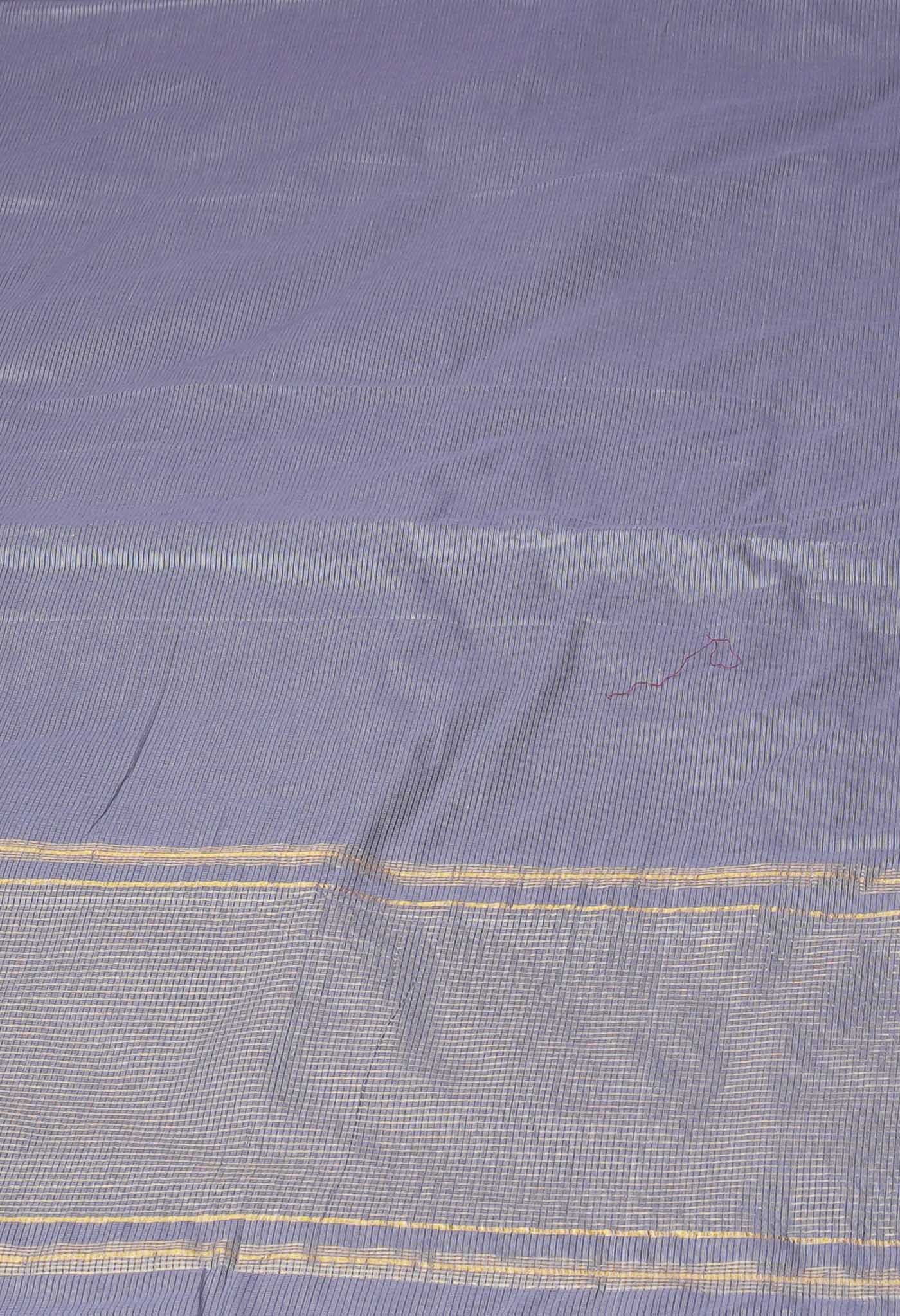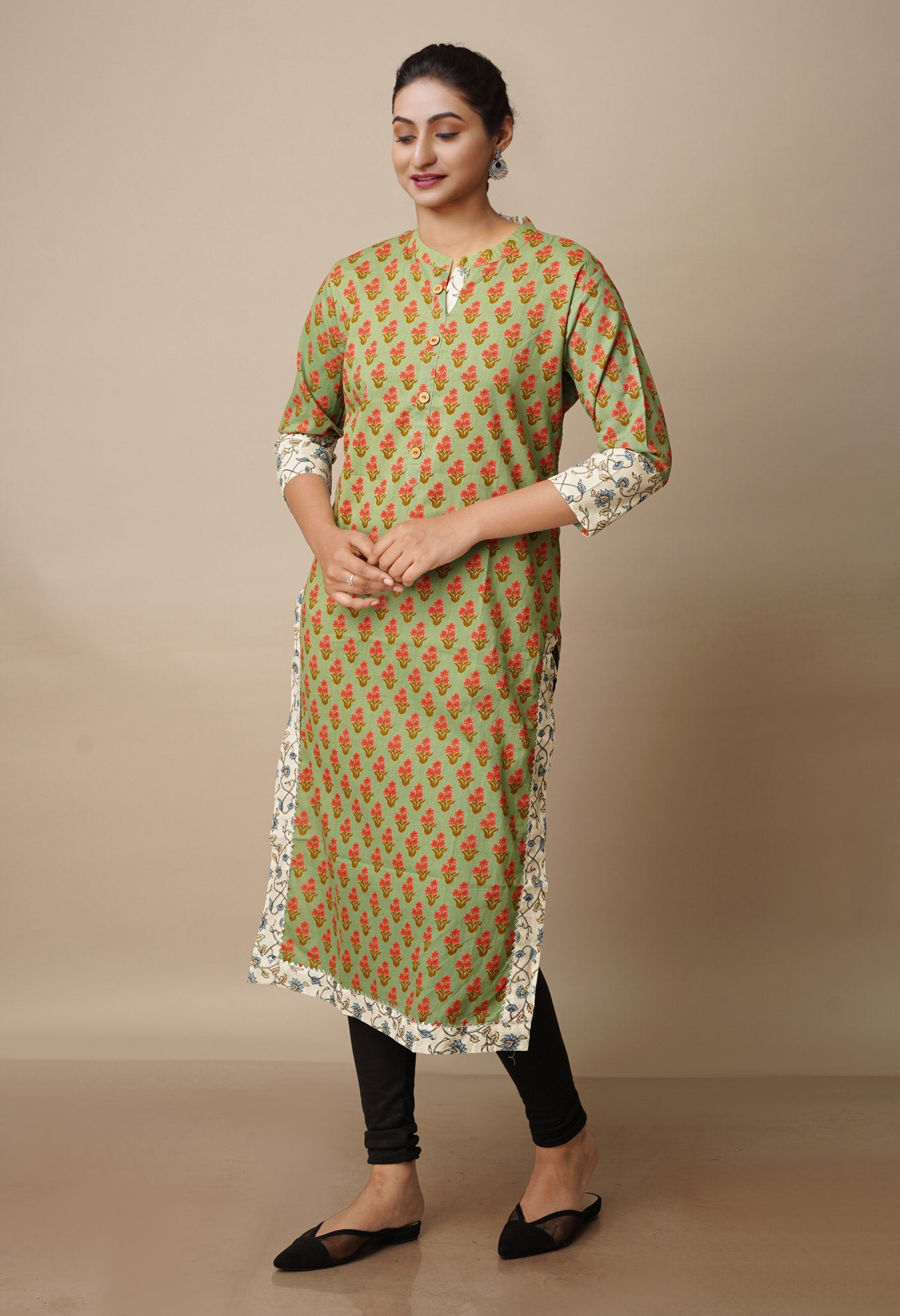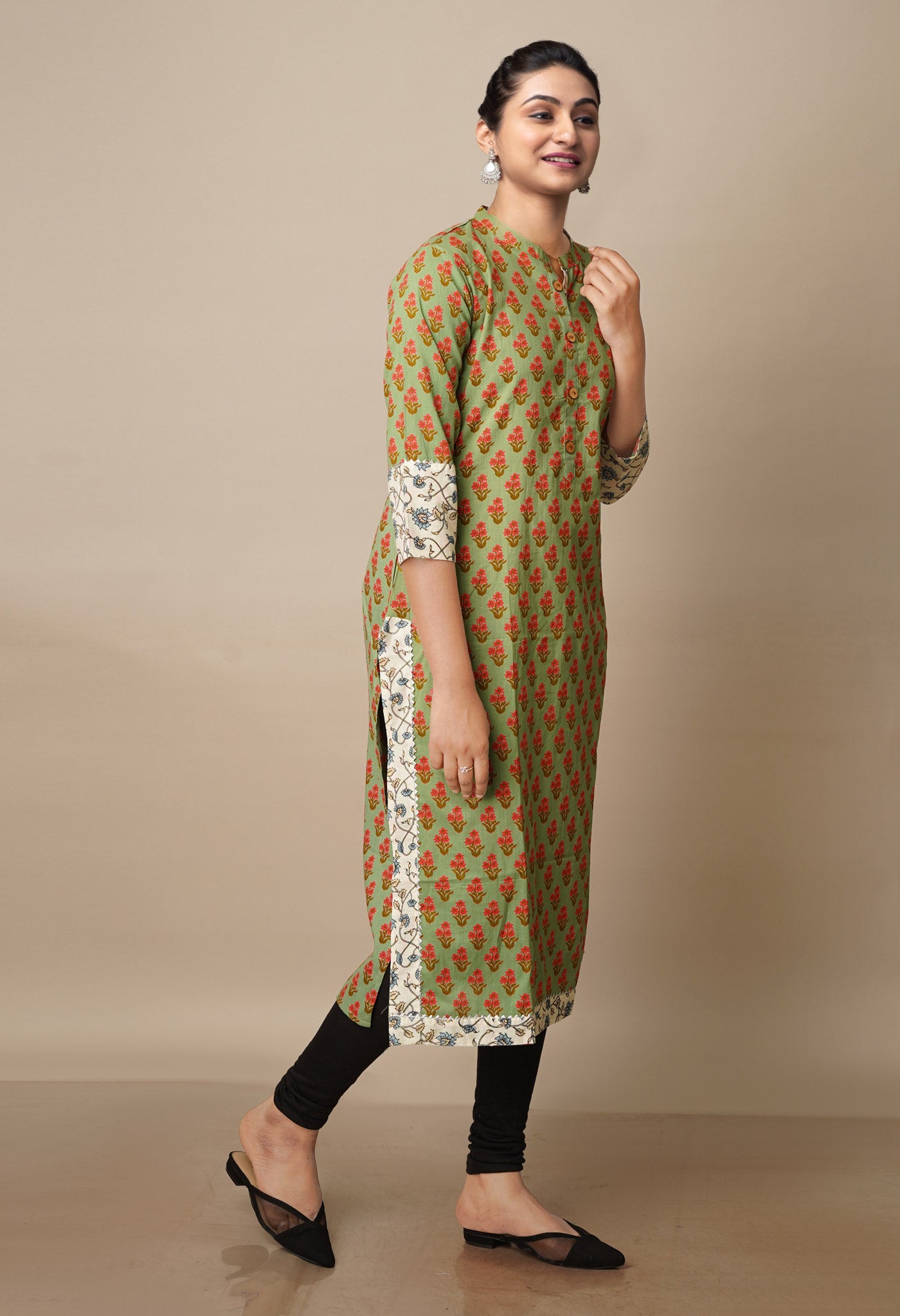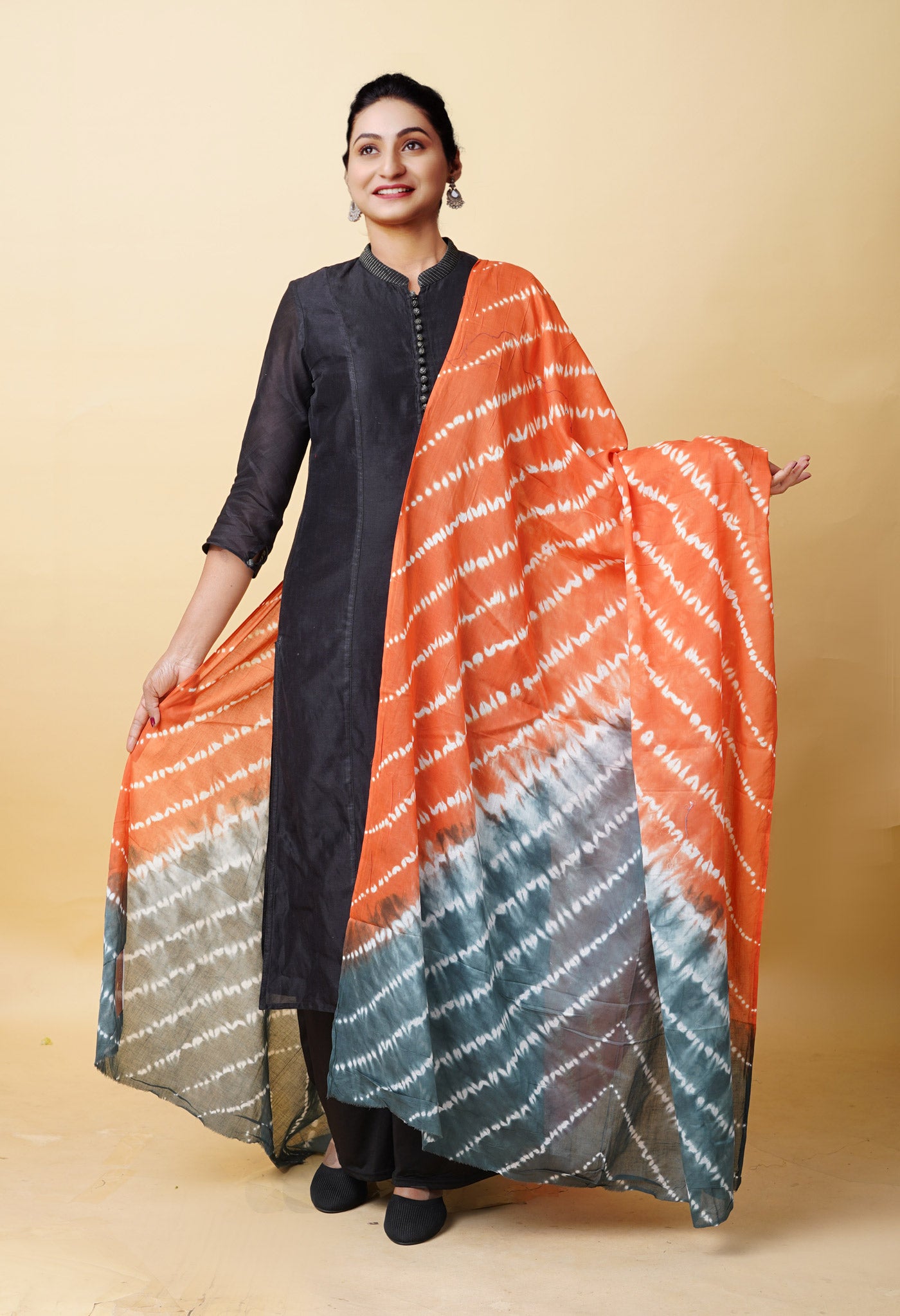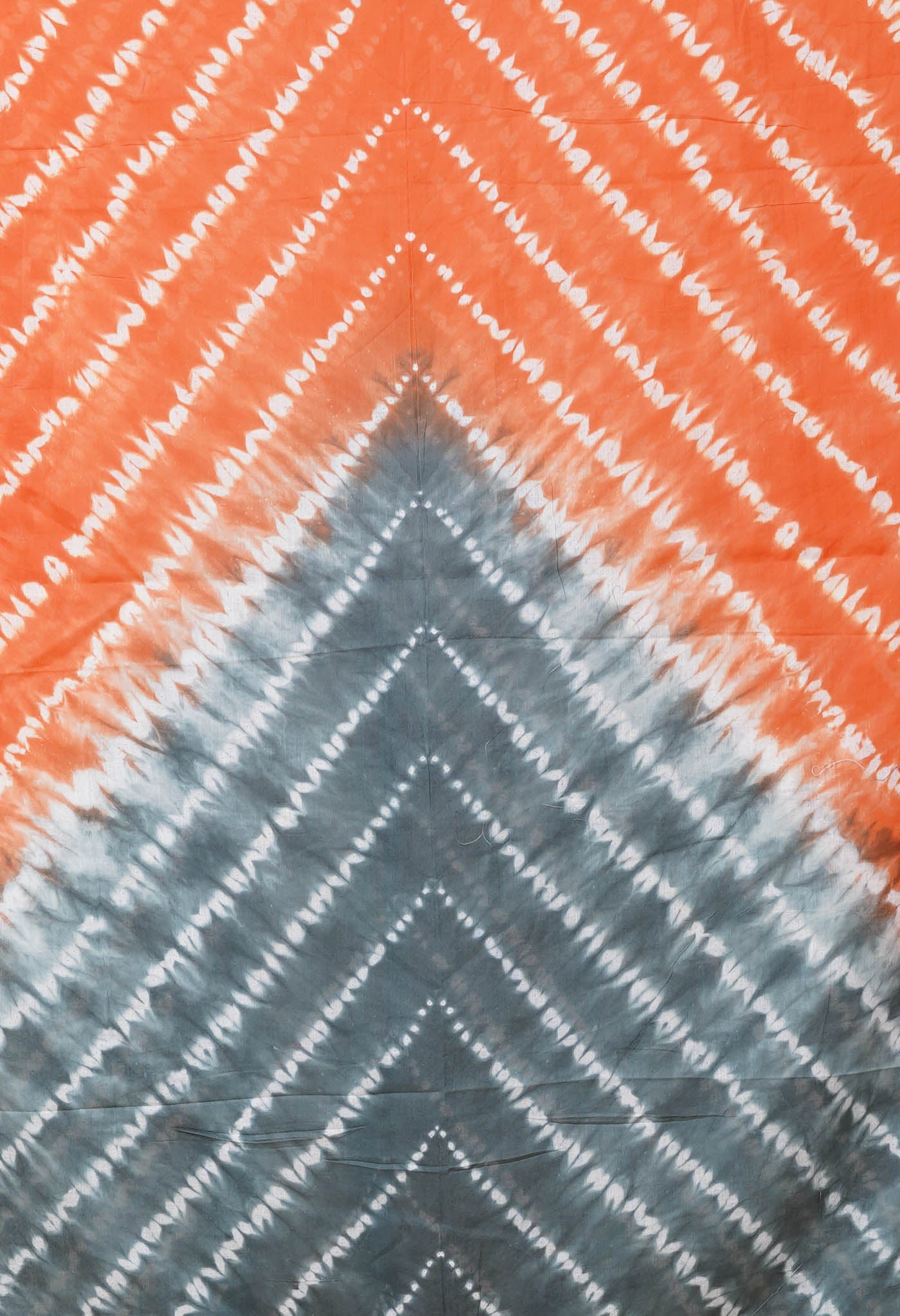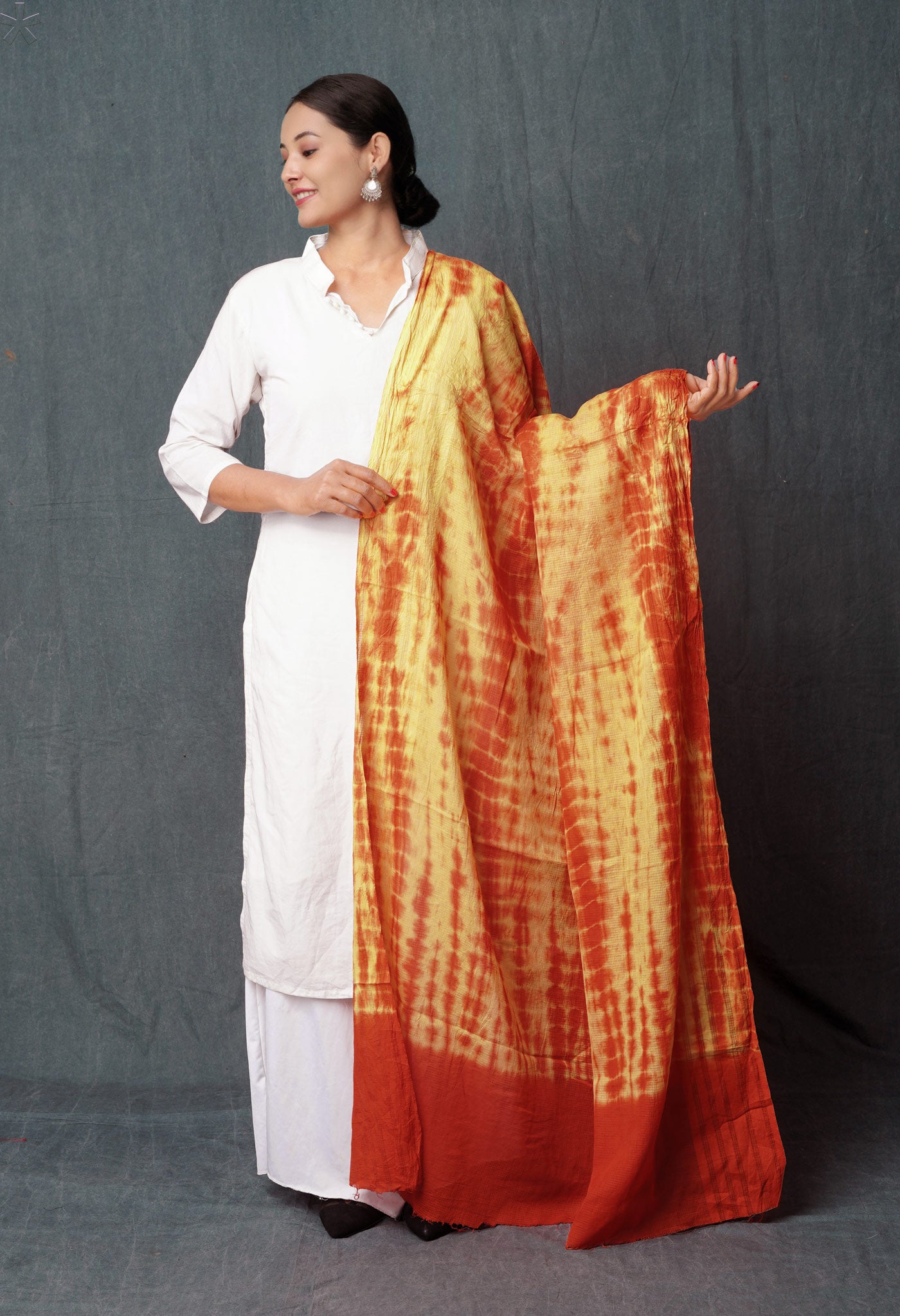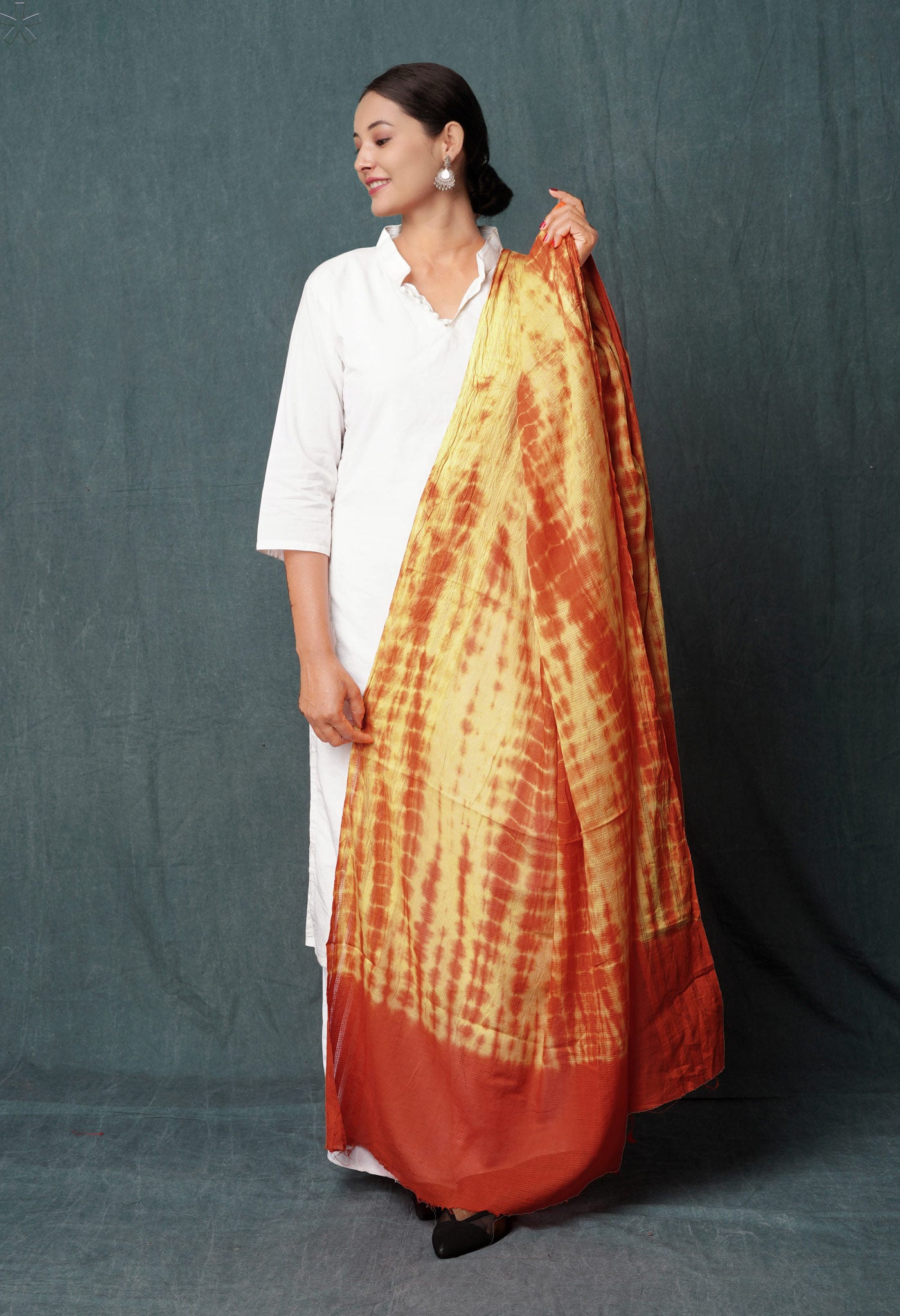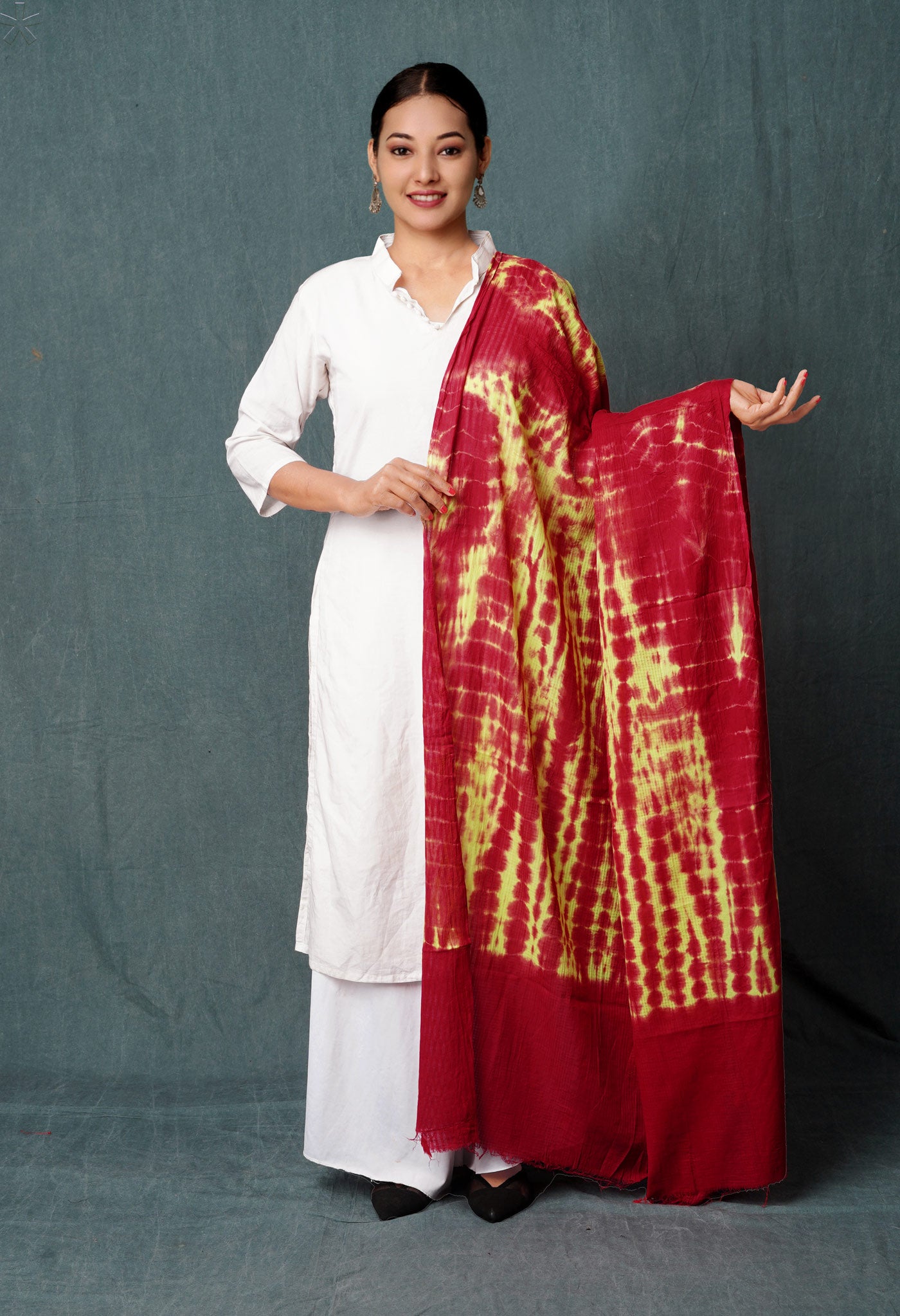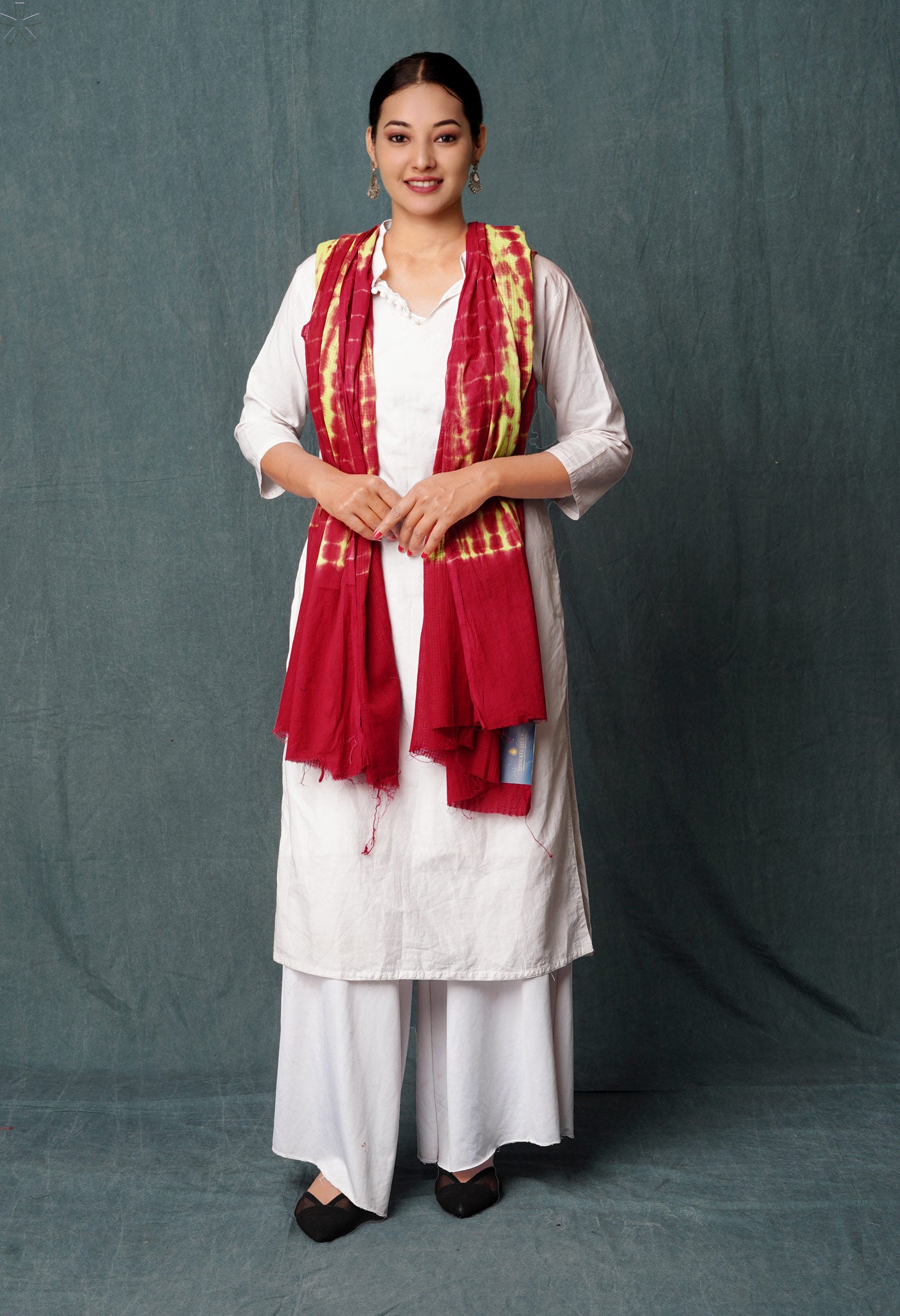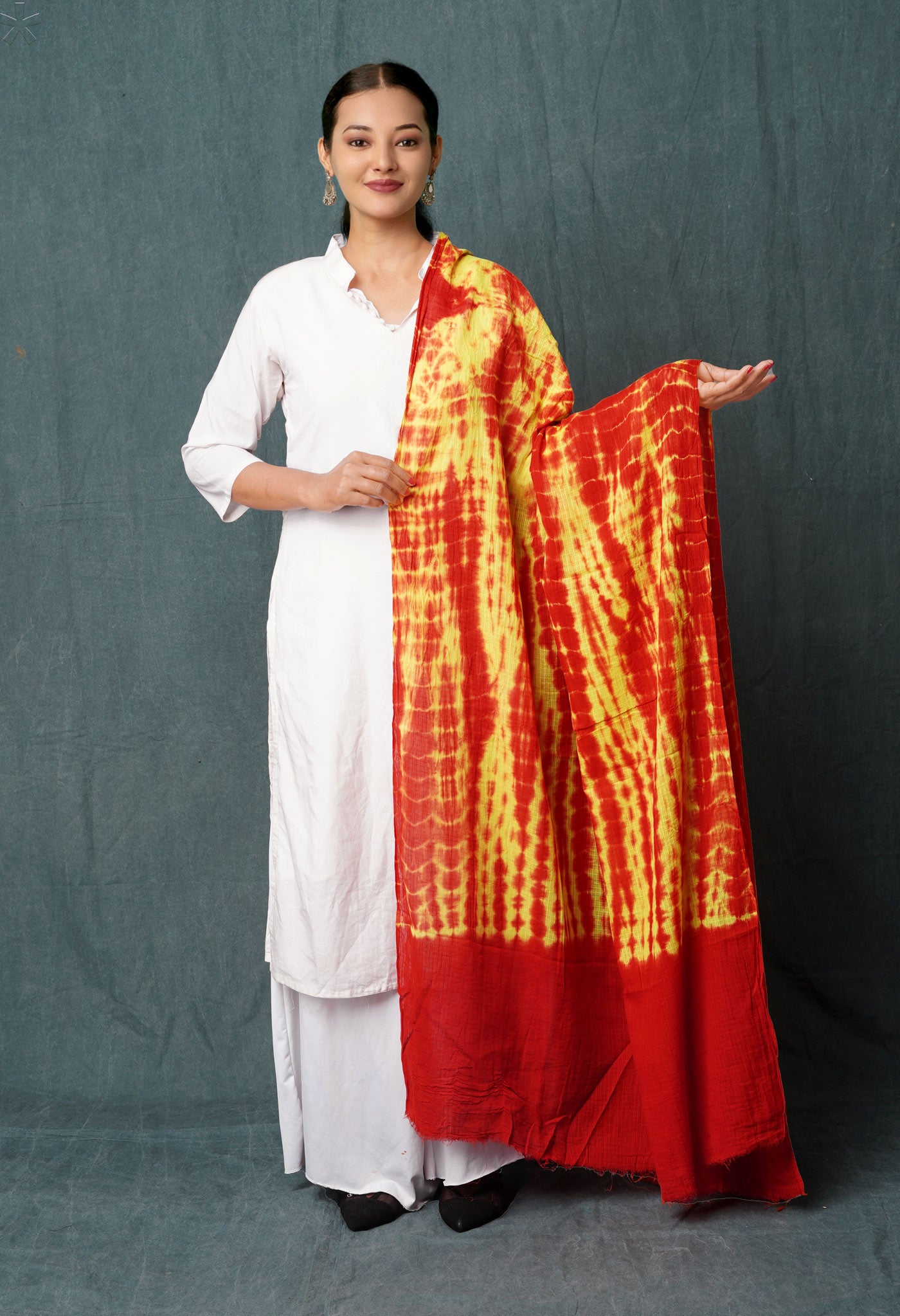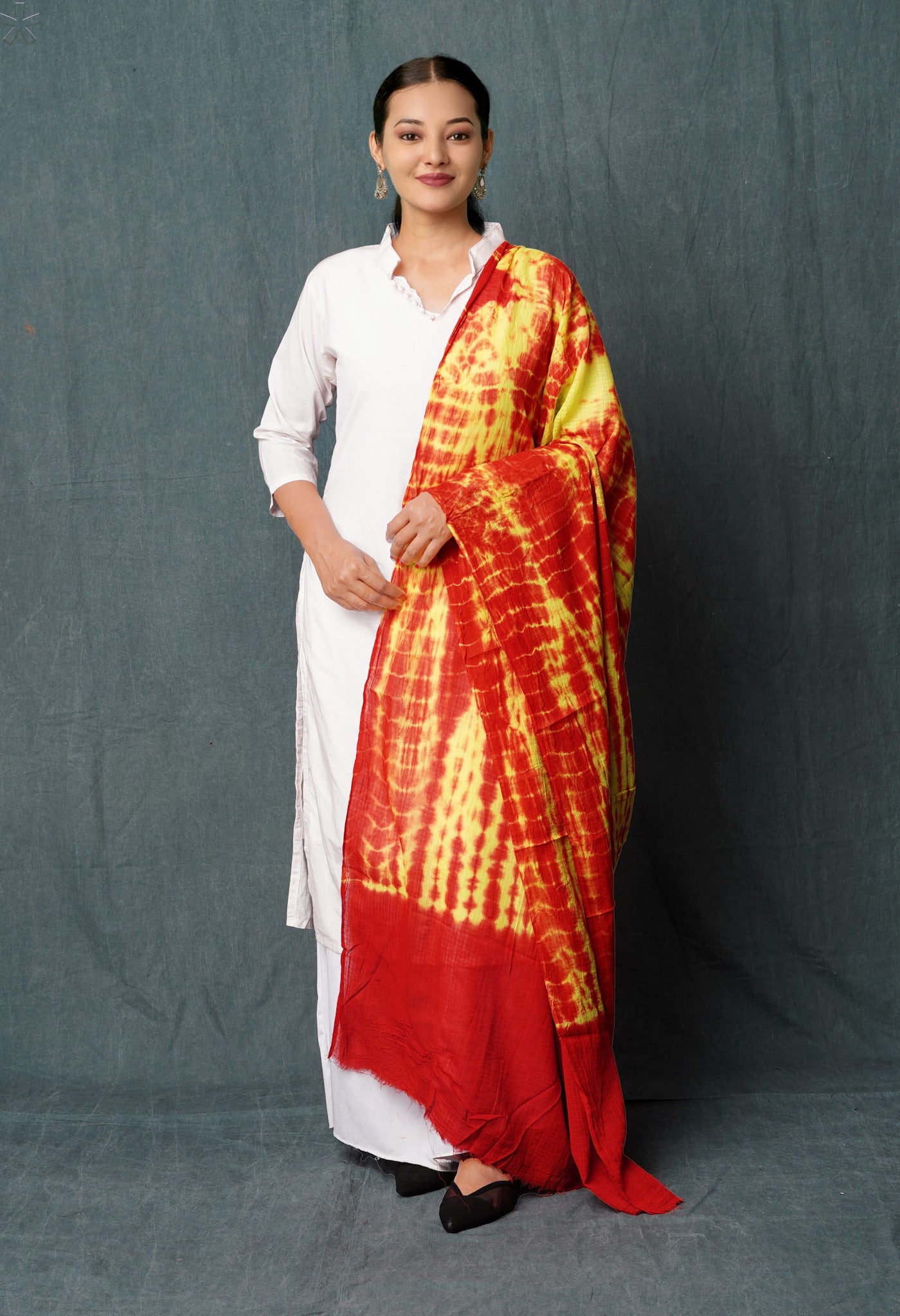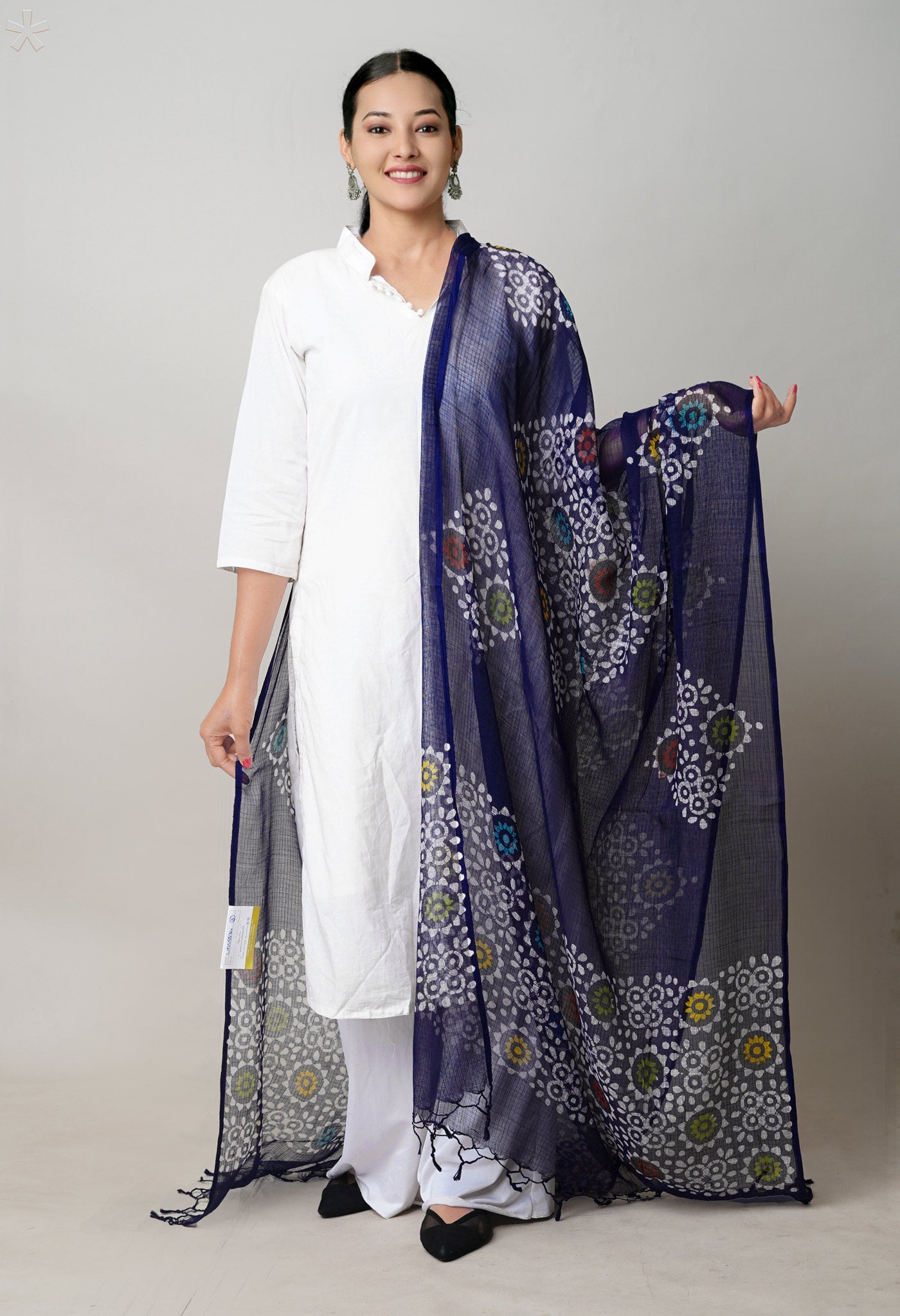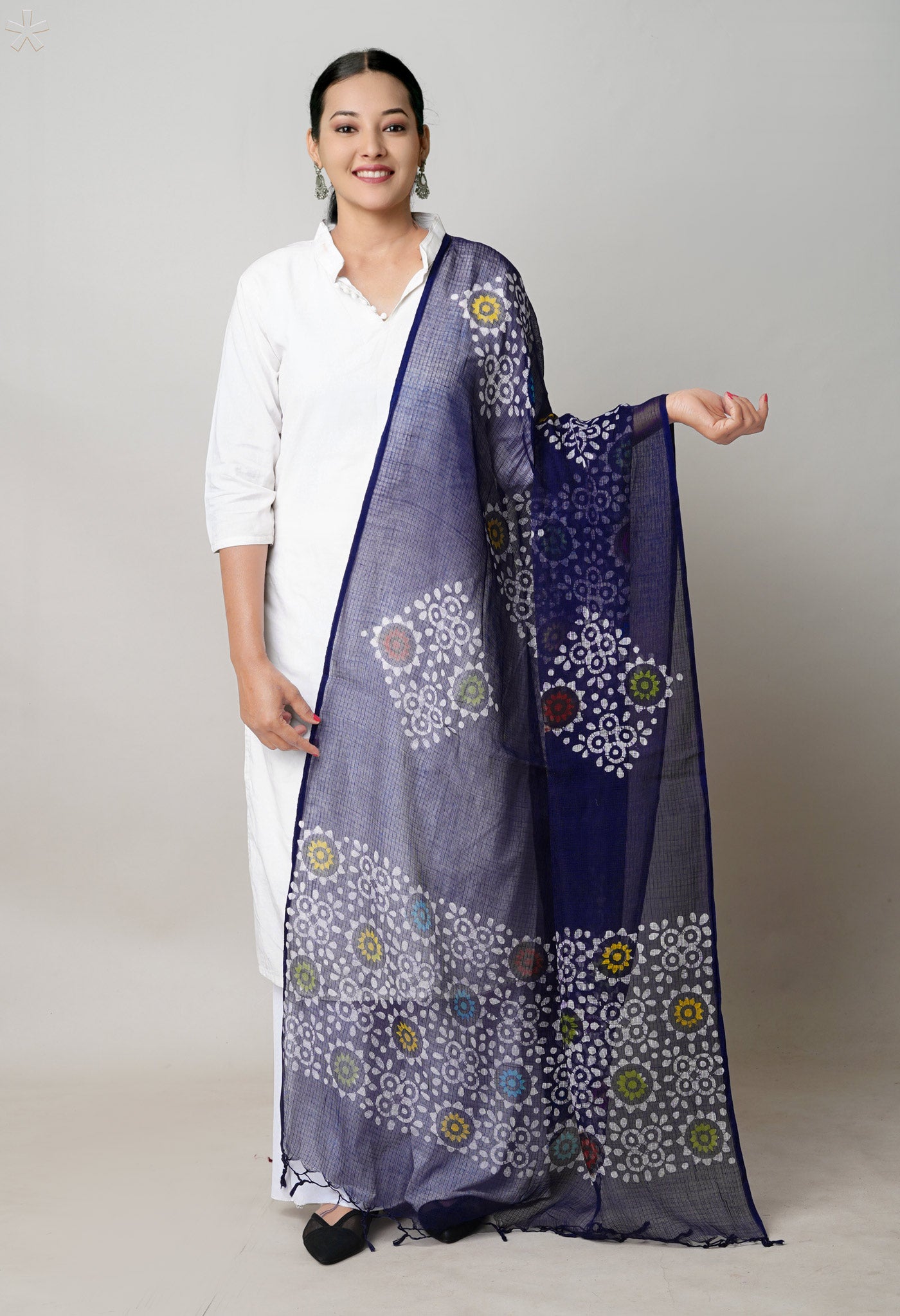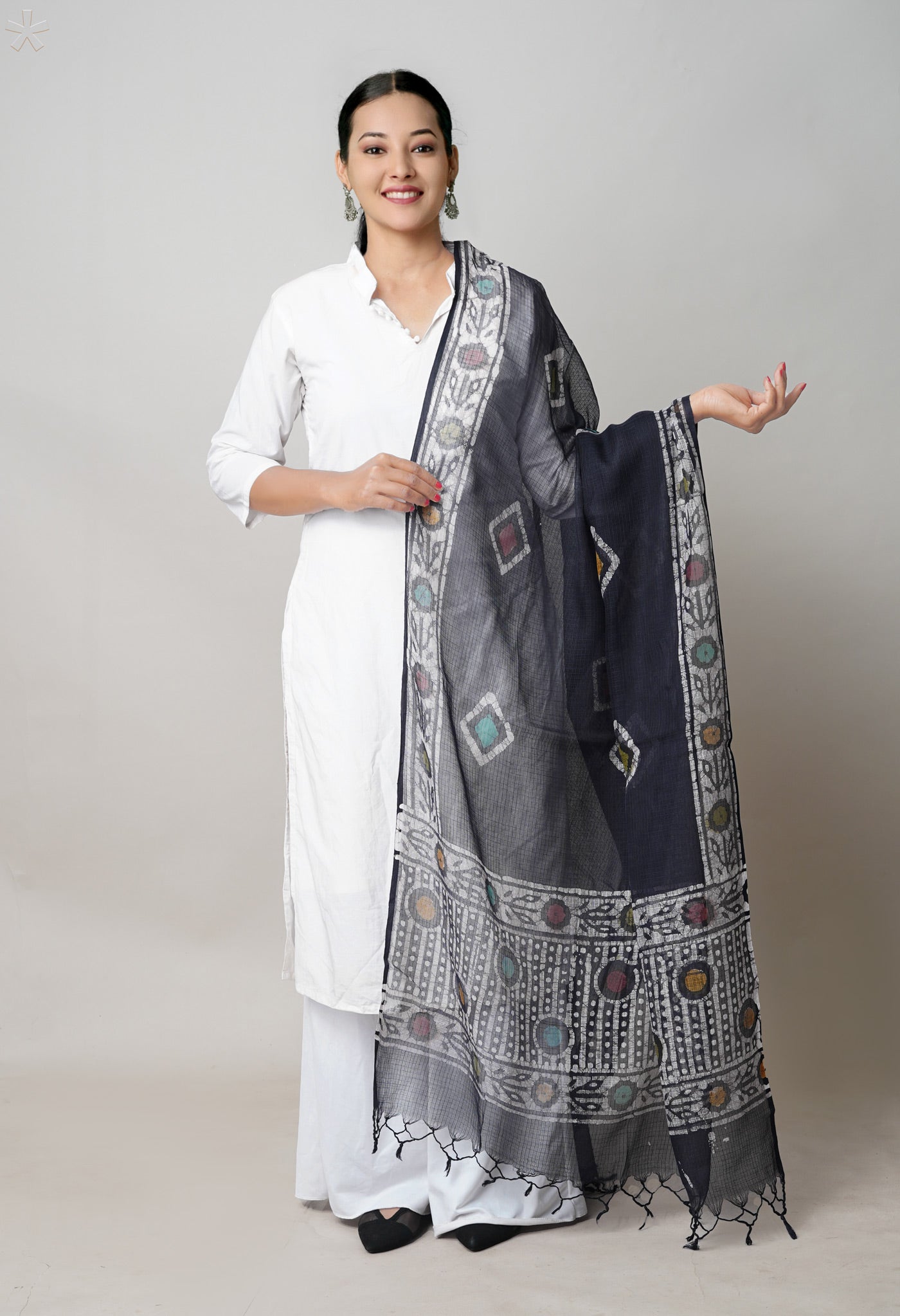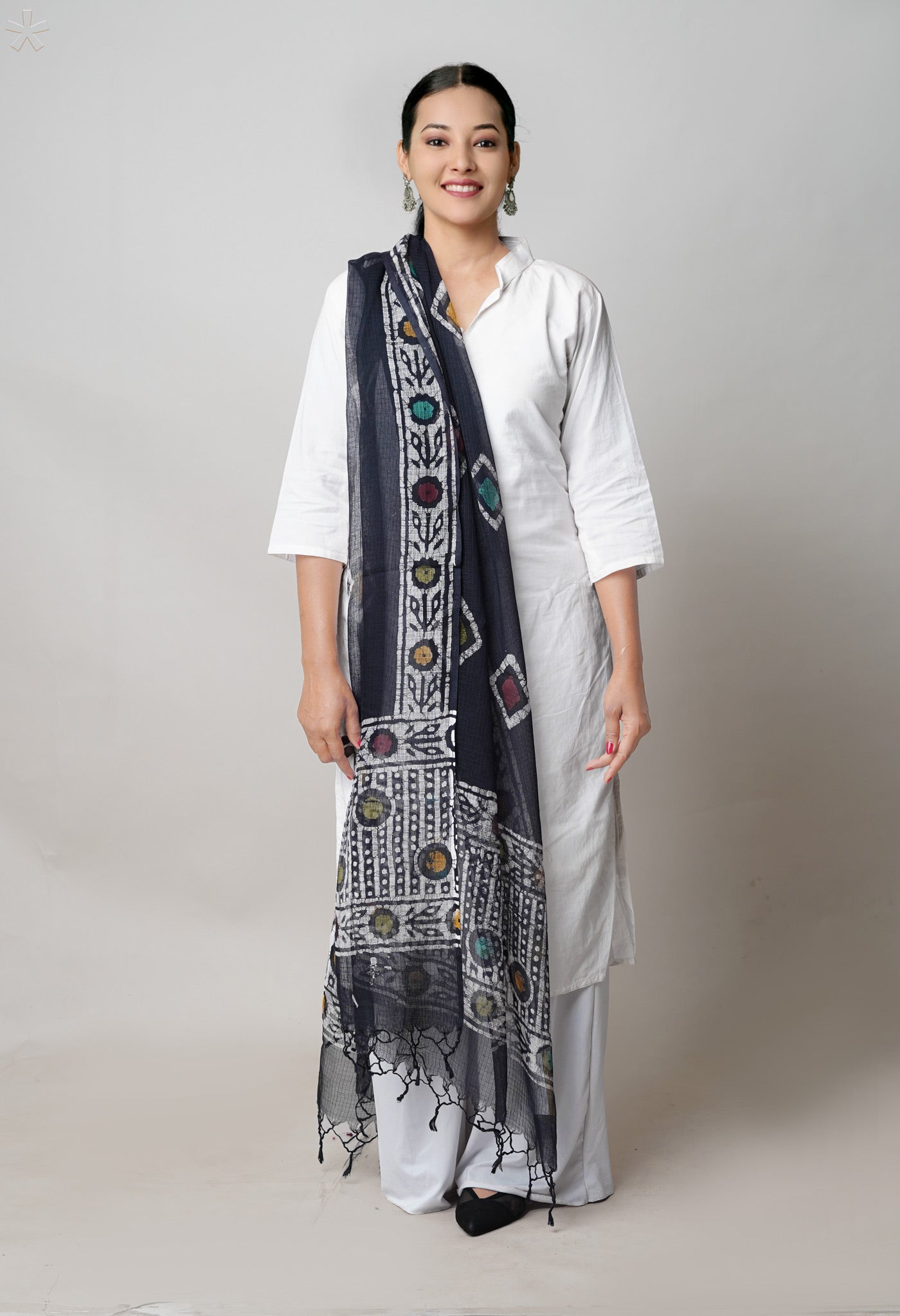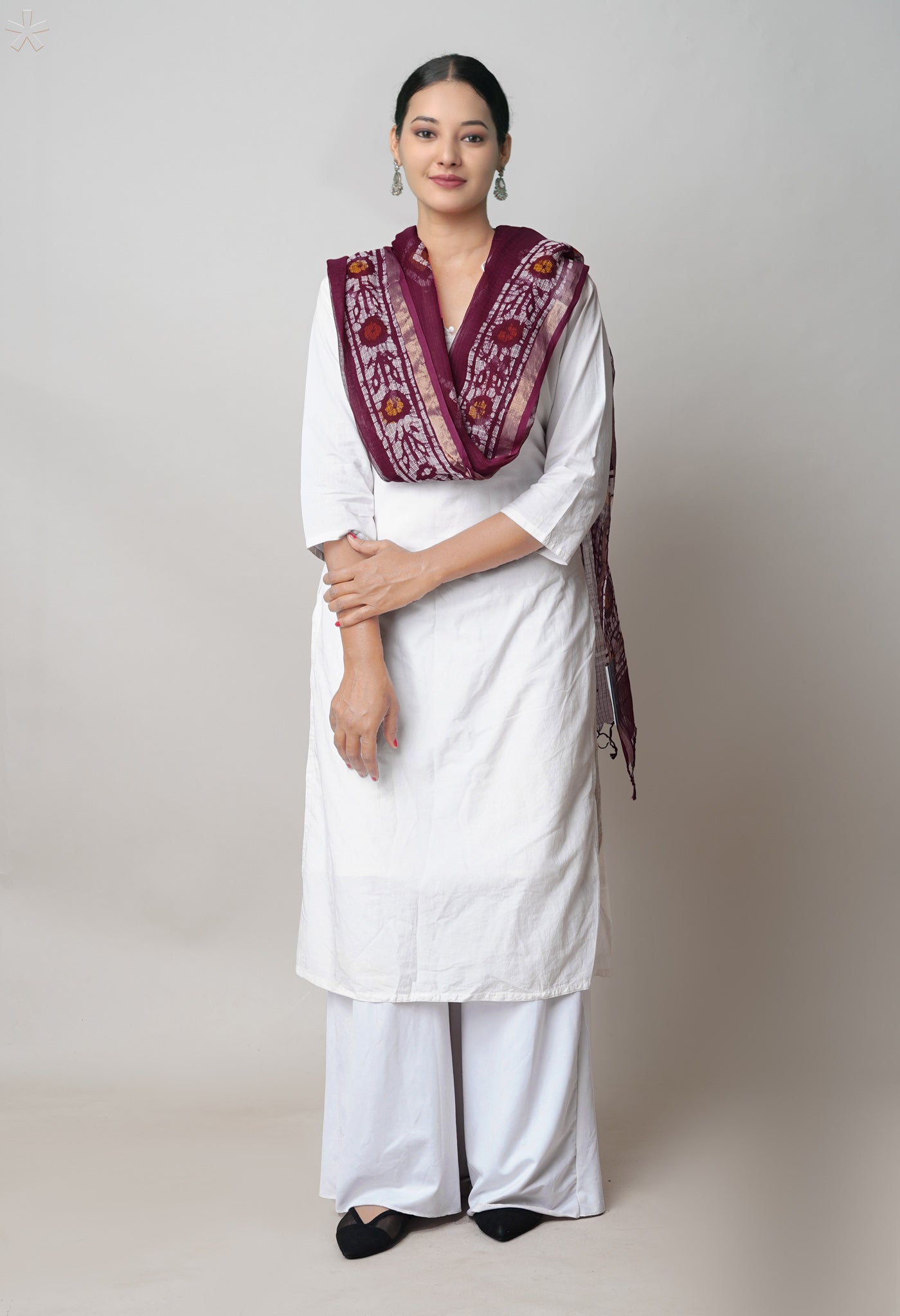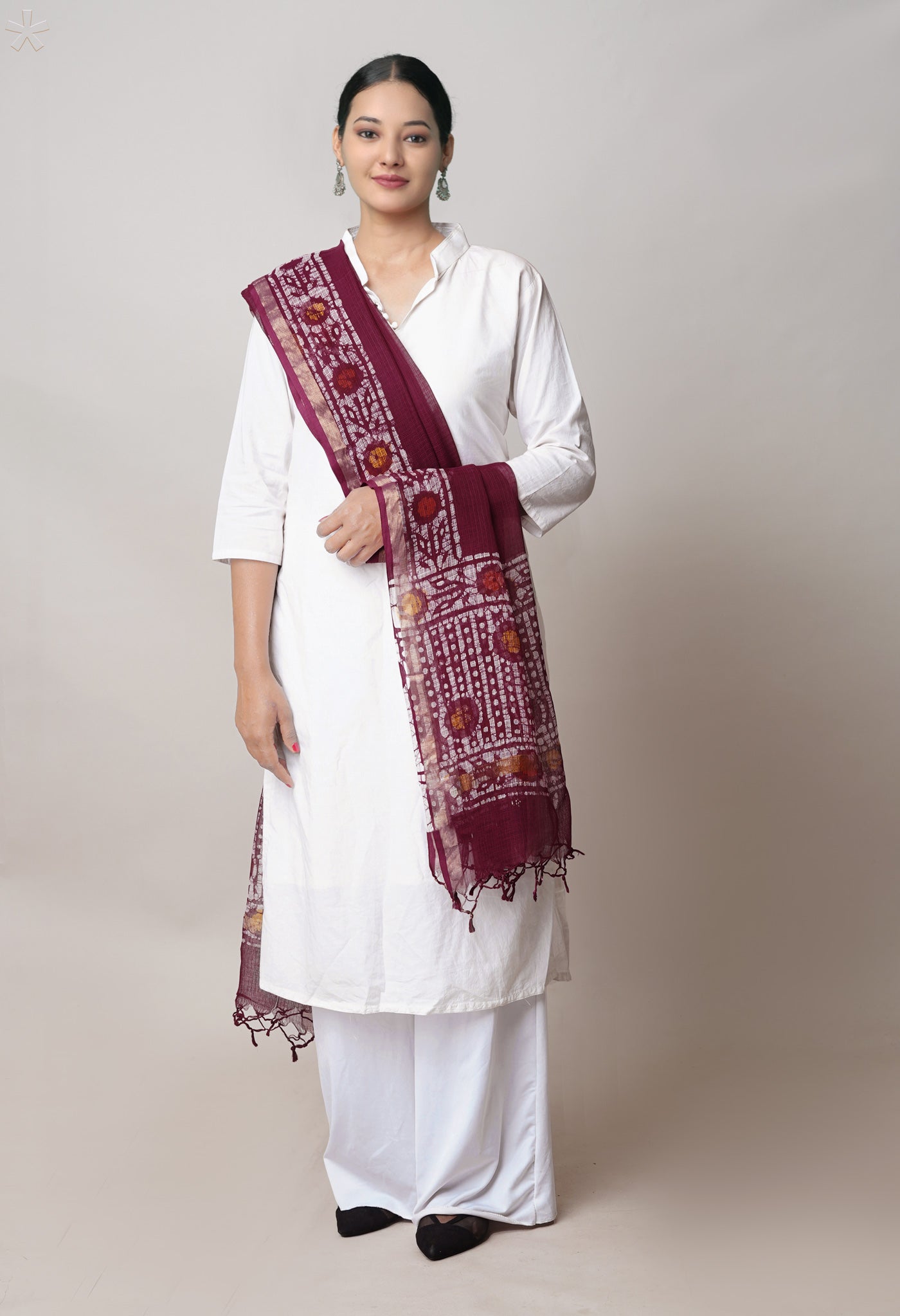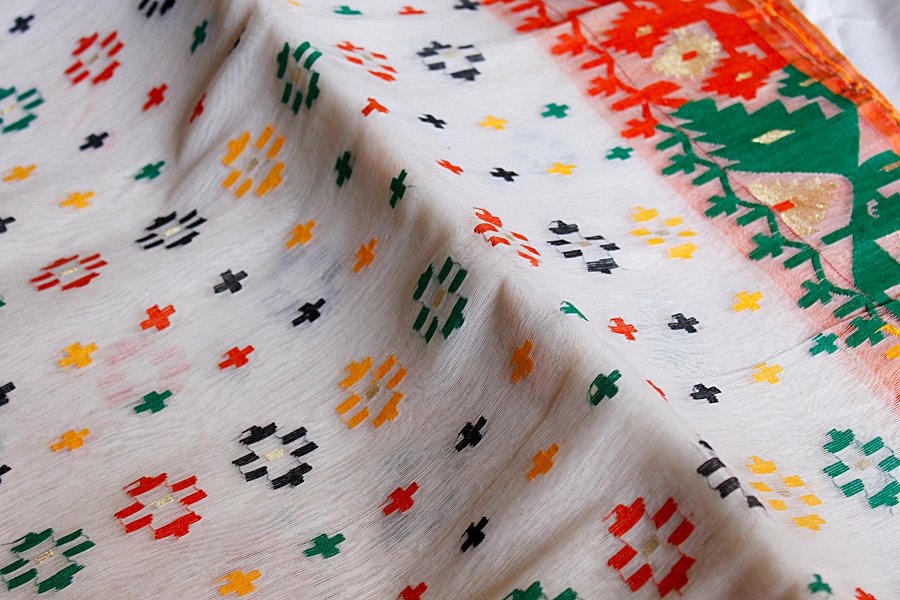
Jamdani – a fine art weave attachment on fabrics – Part I
What is the Jamdani?
Jamdani or Jamdhani is a hand-woven technique of Bengal that  creates patterns of various colours and designs on cotton or silk sarees. Intending to improve the aesthetic appeal, it takes the form of cotton and gold thread weaving to create motifs of geometric patterns and floral designs in colourful hues. Jamdhani hand weaving is considered a necessary accompaniment for most Bengal sarees.
creates patterns of various colours and designs on cotton or silk sarees. Intending to improve the aesthetic appeal, it takes the form of cotton and gold thread weaving to create motifs of geometric patterns and floral designs in colourful hues. Jamdhani hand weaving is considered a necessary accompaniment for most Bengal sarees.
The appeal of Jamdani
Bengal enjoys an advantage, through the Jamdhani pattern on cotton and silk, to create such beautiful offerings as the Baluchari Saree, the Shantipur Saree, the Bengal Cotton Saree and the Tussar Silk Sari. Lending elegance and grace to the wearer, these Bengal weaves find social gatherings, parties, marriages and other grand functions, splendid occasions for the Jamdani magic to be displayed at. So universal is the appeal, that today the Jamdhani is an inclusion in the making of some of the traditional varieties other than that of Bengal such as Banaras, Venkatagiri, Uppada, Kanchipuram, Dharmavaram and Mysore Sarees.
[/vc_column_text][vc_row][vc_column width="1/2"][vc_gallery interval="3" images="10792,10791,10798" img_size="541*349"][/vc_column][vc_column width="1/2"][vc_column_text]
Types of Jamdhani
There are several varieties of Bengal handlooms with the Jamdani incorporation, each with its own distinctive style. Each has one characteristic feature that distinguish it from the others. Based on the variations in the Jamdani weave, sarees can be termed as Daccai Jamdani, known for its colourful motifs, the Shantipur Jamdhani for its soft texture, the Tangail Jamdani for its traditional borders and the Dhonekai Jamdani for its colourful hues.
[/vc_column_text][/vc_column][/vc_row][vc_row][vc_column][vc_column_text]General facts associated with Jamdani
Since the 17th century one of the earliest known references to jamdani, a fine, hand  woven figured muslin produced in Bengal has been made. Thicker cotton threads are laid into the weft to produce the illusion of a suspended pattern on the surface of an almost transparent fabric. Intricate colored motifs seem to float upon the cloth. The word jamdani is thought to have derived from jaam-daar, a Persian weaving term for floral designs in cotton thread or possibly, jama, the Bengali word for dress.
woven figured muslin produced in Bengal has been made. Thicker cotton threads are laid into the weft to produce the illusion of a suspended pattern on the surface of an almost transparent fabric. Intricate colored motifs seem to float upon the cloth. The word jamdani is thought to have derived from jaam-daar, a Persian weaving term for floral designs in cotton thread or possibly, jama, the Bengali word for dress.
Production of jamdani reached a pinnacle during the latter period of the Mughal empire. The ultimate test of its fineness was to pass a sari width through a small golden ring. Centuries before the arrival of the Mughals, the Bengali  textile industry had exported fine cotton muslins to both Roman and Chinese empires. The Greek geographer Megasthenes described Bengali muslins in the 4th Century BC. The Romans were so inspired by the fabric’s diaphanous quality they called it “woven air”. In the 17th and 18th centuries, the fabric became a much desired and expensive trade good exported west to Kabul, Baluchistan, Persia, Arabia and Greece. Jamdani continued to be produced and exported during the days of the British Raj, but the British supported their own agriculture and textile industries at India’s expense, and the quality of Bengali jamdani declined. Recently, quality has returned with revived interest in traditional Indian textiles. Today, jamdani is produced more or less as it has been for centuries.
textile industry had exported fine cotton muslins to both Roman and Chinese empires. The Greek geographer Megasthenes described Bengali muslins in the 4th Century BC. The Romans were so inspired by the fabric’s diaphanous quality they called it “woven air”. In the 17th and 18th centuries, the fabric became a much desired and expensive trade good exported west to Kabul, Baluchistan, Persia, Arabia and Greece. Jamdani continued to be produced and exported during the days of the British Raj, but the British supported their own agriculture and textile industries at India’s expense, and the quality of Bengali jamdani declined. Recently, quality has returned with revived interest in traditional Indian textiles. Today, jamdani is produced more or less as it has been for centuries.
Making jamdani is very labor intensive requiring specialization that is divided amongst workers by religion, village and, especially, gender. The work generally involves a community of artisans, often a family of weavers or dyers cooperating in accordance with years of tradition like a carefully calibrated clock. Work is scheduled according to the season of the year and the time of the day, choosing the most appropriate moments for the practice of various tasks.
[/vc_column_text][vc_column_text]
Historical background of Jamdani
 Long back there was a prince who was known to be a connoisseur of all things fine in life. One day, during his royal travels in the land of Bengal, he met a princess renowned for her ethereal beauty and impeccable taste in clothes. Awestruck with her charm the prince vowed to give up everything to marry her. The prince was no other than the famous Mughal Emperor Jahangir while the princess was Mehr-un-Nissa who was later named as Nur Jahan owing to the aura she shone with when wearing the brilliantly woven Jamdani, which happened to be her favourite attire.
Long back there was a prince who was known to be a connoisseur of all things fine in life. One day, during his royal travels in the land of Bengal, he met a princess renowned for her ethereal beauty and impeccable taste in clothes. Awestruck with her charm the prince vowed to give up everything to marry her. The prince was no other than the famous Mughal Emperor Jahangir while the princess was Mehr-un-Nissa who was later named as Nur Jahan owing to the aura she shone with when wearing the brilliantly woven Jamdani, which happened to be her favourite attire.
The story of Jamdani however dates back much before Jahan and Mehr-un-Nissa - The timeline for jamdani can be traced as early as c. 321 -185 BCE. Megasthenes, Greek ambassador in Chandragupta Maurya's court writes vaguely - "Their robes are worked in gold, and ornamented with various stones, and they wear also flowered garments of the finest muslin."
The finest muslin as Megasthenes calls it refers to one of the most time and labor-intensive forms of handloom weaving, renowned throughout the world as Jamdani. Originally extracted from Karpas cotton and currently worked on cotton-silk blend, Jamdani weaving is like tapestry work where small shuttles of colored, gold or silver threads are passed through the weft. An eco friendly art, Jamdani is spun by hand and foot tools and may take up to 13 months to complete, if two full time weavers work on it. The vibrancy of colours and the richness of motifs help identify a Jamdani from the variety of other handloom produce.
Though the origin of the art remains rooted in Bengal, the name is shrouded in mystery. Some believe it to have originated from Persian language, where Jama relates to cloth and dana means dots. Hence, it refers to a type of dotted cloth which was popularized in the Indian sub-continent by the Muslims. Another version has it that the word comes from the Persian words Jam and Dani which mean a superior variety of liquor and the vessel, respectively. It is said that the female bartenders used to wear a kind of muslin that gave way to this name.
The journey of Jamdani began in the middle era. It was a combination of Parsi and Mughal cultures that bore its fruit in Dhaka and the consequence was to the development of a special form of jamdani known as Dhakai Jamdani the use of Jamdani was restricted only to the royals and the landed class Though the Jamdani business was monopolized by the Muslims in the early days, it was traded by the Europeans, Iranis, Armenians, Mughals, Pathans and the Baniks later on. It was the most exported item from Bengal in the 17th and 18th century.
[/vc_column_text][/vc_column][/vc_row][vc_row][vc_column][vc_gallery type="image_grid" images="10824,10831,10823,10822,10829,10830,10826,10828,10825,10834"][/vc_column][/vc_row][vc_row][vc_column][vc_column_text]
In the next and concluding part we shall go into the more detailed and intimate aspects of the making of the Jamdani fabric.
[/vc_column_text][/vc_column][/vc_row][vc_row][vc_column][vc_btn title="Shop for Jamdhani sarees" color="blue" link="url:http%3A%2F%2Fwww.unnatisilks.com%2Fsarees-online%2Fby-popular-variety-name-sarees%2Fjamdhani-silk-sarees.html||"][/vc_column][/vc_row]

